These incredibly bizarre frogs mostly come from Central Africa and are also known as Horror frogs and Wolverine frogs.

If that’s not weird enough, Wolverine frogs also have sharp claws in their back feet, which they create by breaking their bones.
His Face Said It All
When the veterinarian saw what Jonathan brought back with him from the woods, the expression on his face said it all. He just looked at Jonathan and told him that he had done a huge mistake.

Jonathan wasn't expecting this. He honestly thought he was saving a lost creature being unaware of the outcomes. The little animal wasn't a monkey as he initially believed, nor was it a puppy as some might assume. So what was it?
A Born Animal Lover
Jonathan had always been an animal lover. He adored dogs, he loved cats and he cherished small creatures like squirrels and hamsters. They were his best companions.

Whenever he found a lost animal, he would do whatever he could to help and save it. He would go out of his way to make sure the precious living soul was in no danger.
In the Woods
A walk in the green woods was something Jonathan did regularly. The woods were where he found tranquility and where he felt at home the most. He would very often get in the car, park on the outskirts of the forest, and go on a daily adventure.

On this specific day, he parked his car as he always did, not knowing how the day would end. And this specific day ended very differently than what he anticipated.
A True Rescuer
The number of animals that Jonathan had saved over the years was countless. He has rescued birds, reptiles, rodents, and stray dogs. He made sure they all ended up in a better and safer environment.

People who knew Jonathan referred to him as a hero, however, he didn't like it. He just thought he was doing whatever anyone else would have done. And besides, how can you not help an animal in need?
An Amature Vet
Jonathan knew some vets that lived in the same town as him and he was even able to recognize basic medical issues animals had. He was so involved and felt confident doing so.
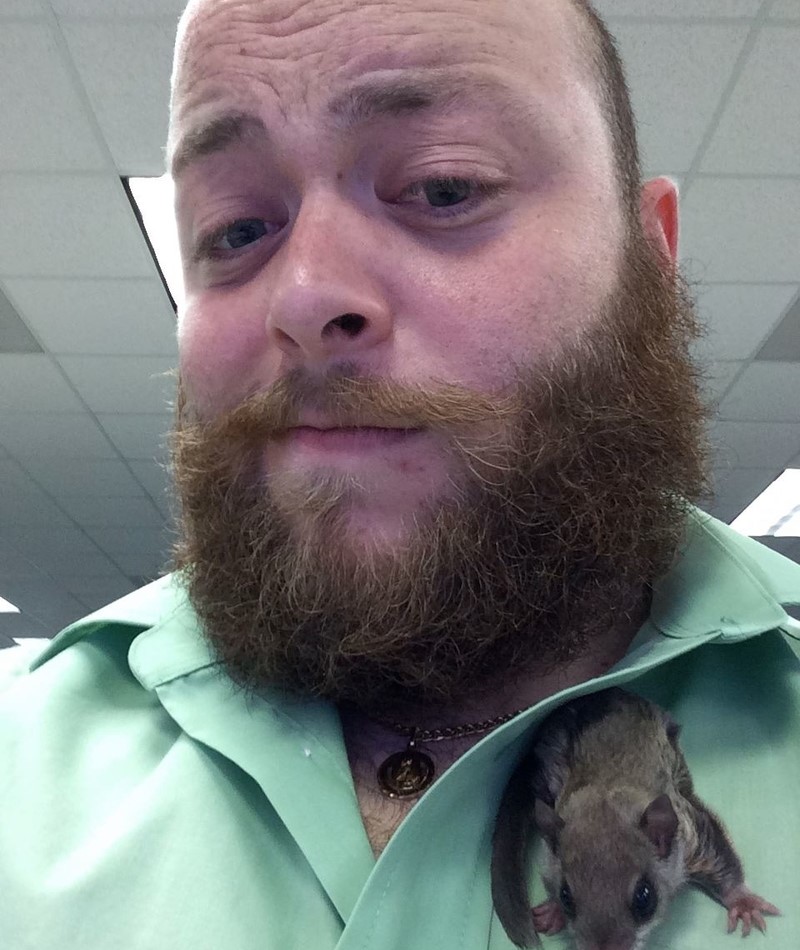
The situation Jonathan would find himself in was very different than anything he was involved in before. This time it was concerning a baby animal, and the problem with it was much greater than he could ever imagine. Big trouble was on its way.
A Suprise of a Day
On this day, while he was hiking in the woods, he heard a soft cry in the distance. It took him a while to indicate where the crying was coming from, and then he heard a much louder scream.
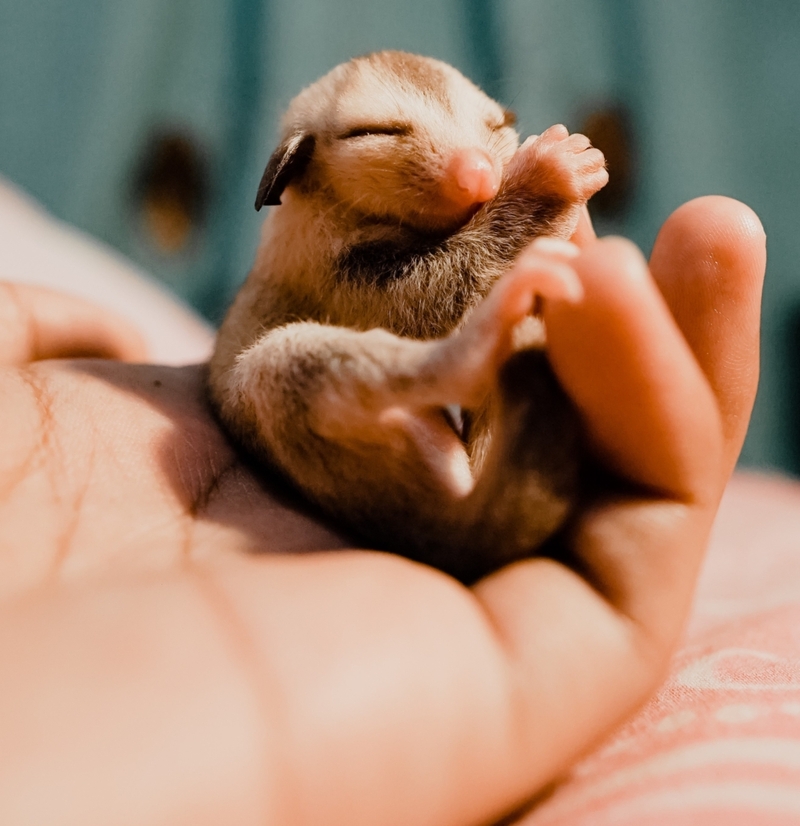
Jonathan found the lost animal and at first believed it was a newborn puppy. But how could such a small puppy end up all alone in the middle of the woods?
It Was So Small
The puppy was laying on a small patch of moss. It was so small that its eyes hadn't opened yet. Jonathan looked around, hoping to find some more puppies as they are usually born in bunches.

Unfortunately, there were no other puppies to be seen and Jonathan was beginning to think that the poor little creature he just found wasn't a puppy after all.
He Seemed Fine
Jonathan examined the small creature to make sure it wasn't hurt or injured. He still wasn't sure what it was and the more he looked at it, the more he was confused.
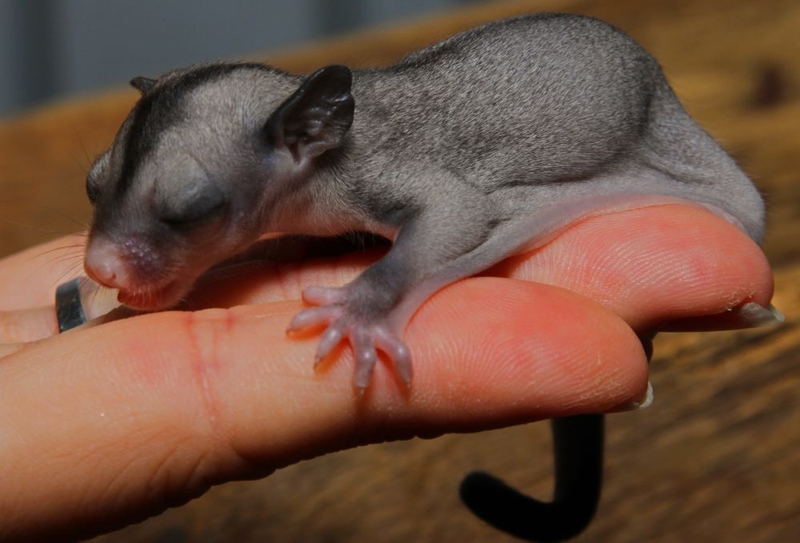
Another thing that Jonathan found very weird, was the bed the little creature was laying on when he found it. Was it a nest the animal built? Was it man-made? Jonathan became very concerned and frightened. What was he holding in his hand?
It Was a Monkey. Or Was It?
After a while, he started to believe that the little cute creature was in fact, a monkey. That was the only logical explanation he could find for this mysterious new friend. And if it wasn't a monkey then what was it?
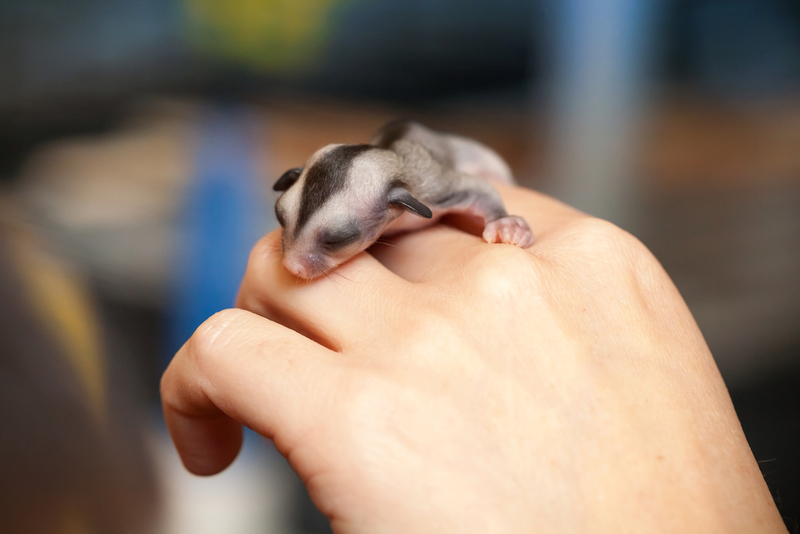
One thing was for sure, he knew he couldn't leave the poor little thing behind so he crafted a carrier bag so he could carry it with him. He still had to get back to his car which was a few miles ahead.
It Wasn't a Monkey and His Car Was Missing
The sky was getting darker and Jonathan wanted to reach his car before it started to rain. While marching back, Jonathan kept looking at the little monkey and the more he did, the more he got muddled. It didn't look like a monkey anymore.

Jonathan was looking for a rational explanation, and if the little creature was some kind of animal that wasn't native to this area, then how on earth did it get here? Anyway, he was about to reach the parking lot, however, he wasn't prepared for what he was about to find.
He Put the Little Thing on His Bag
It didn't take him long to realize that his car was stolen. There wasn't any other car in sight and no people around. Jonathan found himself in an empty lot just before it was about to rain, and with a creature whose identity was only known to God in the back of his bag.

He then realized there was broken glass on the ground. He quickly understood that his car was broken into and that he was stuck in the middle of nowhere with an unidentified friend.
Thank God for Phones
Jonathan was lucky enough to have his phone fully charged. He called the nearest police station so he could report his car stolen. There was not much the police could do at the time.

Jonathan knew he had to get to a vet somehow as he still had the little creature with him. The nearest vet was about half an hour away and he had no idea how he was going to get there.
Where Was Uber When He Most Needed One?
No Uber was available (or just unwilling to go so far out of town to pick him up). He couldn't reach any taxi station and he came to terms that he will probably have no choice but to hitchhike. It began to rain and it was getting cold.

Luck was with him as ten minutes later he found himself in the front seat of a car, on his way into town. A middle age woman stopped for him and was willing to help him, and his dog, or monkey, or whatever the little thing was. This was not the end of Jonathan's problems, though.
There Was Another Passenger
Jonathan didn't notice this at first but on the back seat of the car sat a big beautiful Labrador. The Labrador approached the bag and began sniffing it. At first, Jonathan didn't think anything was wrong but this was about to change.

Jonathan thought he might have been wrong and that the little animal he brought back with him from the woods, was in fact a little puppy and that the Labrador's maternal instincts were simply kicking in. Then he realized the dog's behavior was changing.
He Wasn't as Friendly as He Thought He Was
As Jonathan allowed the big Labrador to get closer to the little animal, the Labrador became vicious and aggressive and before he knew it, the dog was growling at the little animal and at Jonathan.

The Labrador exposed its teeth and was about to attack the little animal, however, was stopped just in time by its owner. The Labrador wasn't happy with the presents of the little....what was this animal?
There Was no Time
Jonathan had to get to the vet as fast as he could. Even before returning home. He had to find out what exactly he was holding so he could treat it accordingly.

The woman that gave him a lift was so kind and was willing to take him wherever he had to go. She dropped him off, wished him well, and went on her way leaving Jonathan to solve the mysterious identity of the little animal.
It Was All in the Vet's Hands
Jonathan sat in the waiting room. He kept the little creature under his coat so other animals wouldn't attempt to approach. He was obliged to show it to the receptionist so she could better understand what was going on.

The animal looked very poor and the receptionist was uneased. She said it would go in next and wouldn't have to wait. Jonathan was uptight and didn't understand what everyone around him was worried about.
He Shared His Story
He went into the vet's room and showed him the little creature he was holding. Jonathan detailed exactly where he found the little one, and what was around and he also told him about the way the Labrador behaved in the car. The vet wasn't surprised.

He asked Jonathan to go back and wait for him in the waiting room. What was going on? While he was waiting he took advantage of his free time and contacted the police again to see if there was any news about his stolen car.
At Least His Car Was Found
Jonathan was about to receive some great news. Apparently, the guy who stole his car wasn't the sharpest pencil in the box as he was found driving around town in a car with a broken window.

He was stopped immediately. When he failed to present a valid driver's license or papers to prove ownership of the car, the police knew this was the guy (or car) they were looking for.
It Was Bad News Time
While he was trying to work out how he was going to get his car back, sue the insurance company and fix whatever was broken, he felt someone tap on his shoulder.

It was the vet and he had a worried look on his face. "I know it’s not your fault, but you made a big mistake bringing that animal here," the vet said. Jonathan's felt sick. His stomach turned upside down.
The Creature Was Doing Bad
As the vet explained what was going on, Jonathan was feeling even worse. The vet clarified that the little animal was in a very fragile condition and that at that point, there wasn't much he could do.

The animal was carrying some kind of disease that was very contagious and this wasn't all. It was unknowingly threatening all of the other animals in the vet's clinic.
So THAT'S What It Was...
The doctor was finally ready to explain to Jonathan what the mysterious animal was. It was a sugar glider. Jonathan was able to put on half a smile. He knew it wasn't a puppy.

The vet went on and explained that the virus the glider was contaminated with was widely known in the area and even though it is most common in rabbits and raccoons, other animals have been known to have it.
Jonathan Was Hoping for the Best
The sugar glider was now isolated at the back of the vet's clinic. Both the vet and Jonathan would have to wash and change as there was a chance of them spreading the disease to other animals.

All the animals in the clinic were tested for several days and thankfully none were infected. Jonathan knew deep inside that he shouldn't have taken the sugar glider and it was better if he just left it there, however, he didn't have the heart to do so.
There Was a Limit to What he Could Do
Jonathan would not be at ease if he would have deliberately left a living creature behind. He was connected to the sugar glider and wanted to assure it made it through and recovered.

He decided to stay in contact with the vet, just so he could get updated about the glider's well-being and progress. It was only a matter of time before a long waited phone call arrived.
There Was More to Come
The vet was on the phone and he had some news. He asked Jonathan to come to the animal hospital right away, and before he knew it he was on his way.

Jonathan had a bad feeling. He drove as fast as he could. He waited in the waiting room hot and sweaty from the hectic journey, and then the vet came out of his clinic.
The Pressure of a Name
The vet had a concerned look on his face and then he asked Jonathan something he least expected. “Have you chosen a name for the sugar glider?" the vet asked. "Have I chosen what?" Jonathan replied.

The vet kept silent and Jonathan, without taking too much time, said "Monkey. I will call him Monkey." A few moments after, the door opened.
What Was Coming Next?
The vet's assistant walked into the room with the sugar glider in her hands. He explained that he was healed, but still too weak to be set free into the wild. Jonathan knew what was coming next.

The vet asked Jonathan if he could take Monkey back home with him and care for him until it was strong enough to go back to a more natural environment.
Happy Days
Jonathan was overwhelmed and joyful. He was so happy to bring Monkey home and she (apparently it was a she) became his loveable pet. He played with her and cared for her and she grew and became stronger and stronger.

Everything was going so well and Jonathan showered her with love. One day he decided to take her outside, and that's when the worst thing he could imagine happened.
She Was Gone
Little Monkey climbed the nearest tree and disappeared. She was nowhere to be seen. He looked all over, and soon enough he realized that there wasn't much he could do.
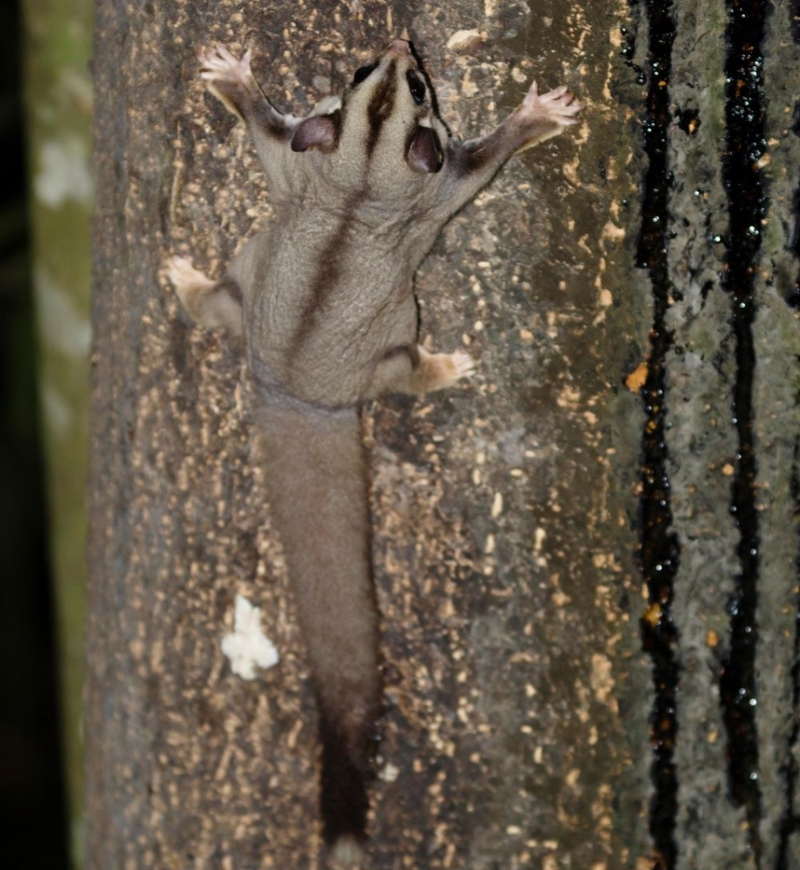
He had a last look and examined all of the trees around him, and eventually decided to go home. He was there for a few good hours and there wasn't much for him to do. He was heartbroken.
He Still Had Hope
The following morning, Jonathan went back to the tree where Monkey disappeared hoping to find some sign of the missing sugar glider. She was nowhere to be seen. Then the unexpected happened.

Just as Jonathan was about to go back home, the sugar glider appeared out of nowhere. She came flying around and landed right on his shoulder. Jonathan was thrilled, however, he sensed something was wrong.
What Was She Going Through?
Jonathan wasn't sure if Monkey was happy in her new home. He didn't know if she naturally wanted to go back to the wild and live with her own kind. Deep inside, he knew what the answer was.

This was their last day together. He acknowledged the fact that sooner or later, Monkey would have to go back to where she belonged. However hard it was, Jonathan was ready to say his goodbyes.
He Was Doing What He Felt Was Right
The following morning he took Monkey to the biggest and greenest tree in the nearby garden and set her free. Within minutes she was gone. Jonathan felt relieved for doing the right thing.
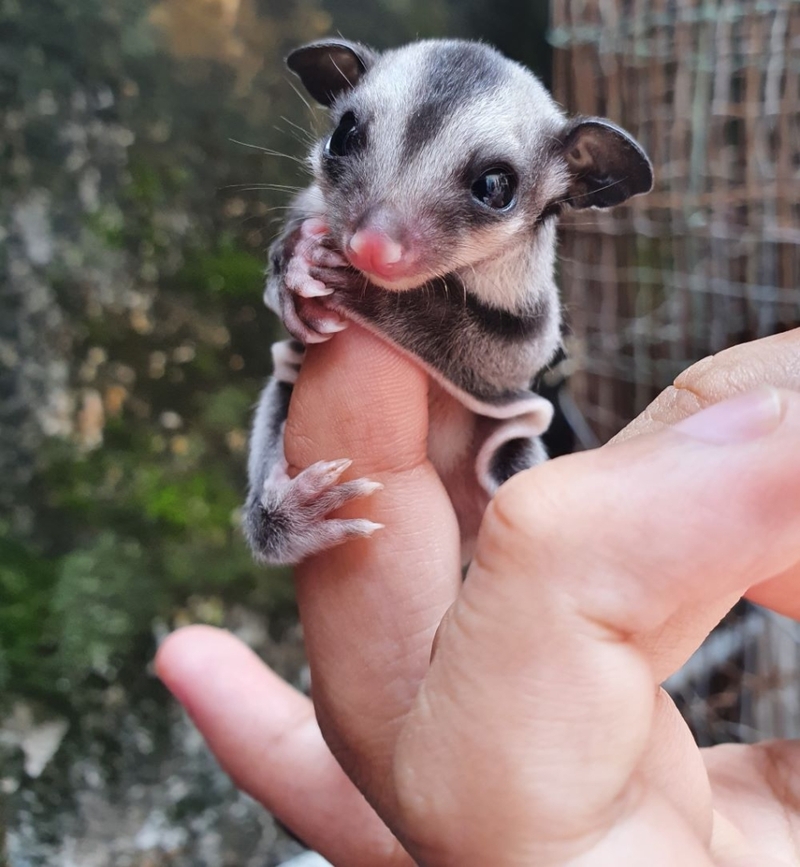
Although he felt grateful and reassured, he was heartbroken. He never thought he could feel so attached to such a small creature. Apparently, love has no size. Jonathan went for a walk in the woods, knowing it would make him feel better.
He Was in For a Suprise
While walking between the crowded and damp trees, Jonathan was hoping Monkey would suddenly appear from nowhere, but that'd not how it was.

When he was at home, he prayed that he would find Monkey waiting for him on a tree somewhere. When it wasn't happening, he was getting disappointed and decided to head back home. Just as he was about to go through the door, something caught his eye.
She Was Back, But She Wasn't Alone
It was a sugar glider. It was Monkey, but she wasn't alone. There was another sugar glider beside her. They looked as if they were after something, or seeking help. Jonathan opened his front door and they both rushed in.

So, although Jonathan was glad Monkey was back, he was a bit concerned about the other sugar glider. He was worried he might be carrying the same virus Monkey had at the time so he decided to go to the vet the very next day.
Here We Go Again
The new little sugar glider had to go through the same procedure Monkey went through at the time. Jonathan waited patiently in the waiting room with Monkey and hoped for the best. The vet came out of his clinic and by the relaxed look on his face, Jonathan sensed that everything was ok and that the sugar glider wasn't carrying any virus. This wasn't all.
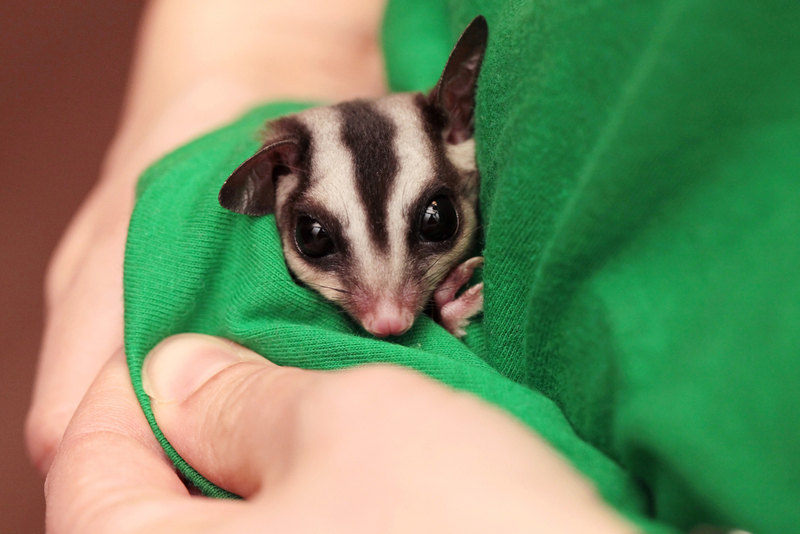
The vet noticed many similarities between Monkey and the new glider and believed they were brother and sister. The next question the vet asked left Jonathan shocked.
Double Trouble
The vet asked Jonathan if he would like to take care of both of the sugar gliders. Naturally, Jonathan agreed and found himself returning home with two new companions. Monkey and her brother.
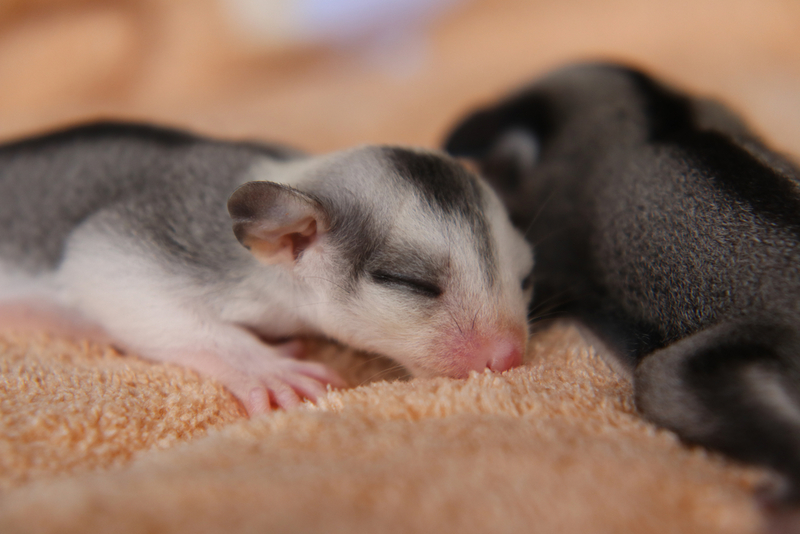
They grew up in a loving and warm environment, that to them, (or at least to Monkey) was a natural habitat. Jonathan treated the two just like any other pet. He fed them, washed them when needed, and took them out to play.
And They Lived Happily Ever After
Jonathan felt he was blessed with Monkey as she gave back the same love that she received. He assumes (as Monkey never really admitted it) that having her brother with her made her content and happy.
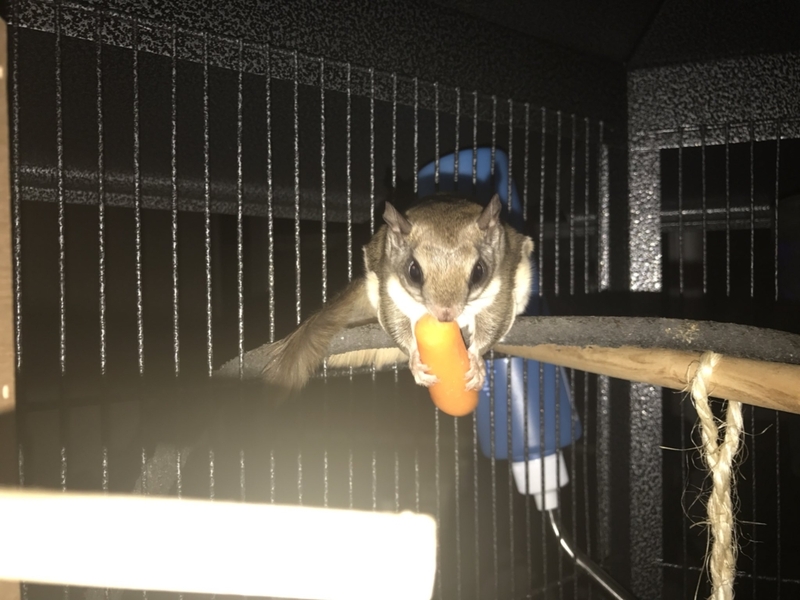
What started off as possibly a very big mistake, turned into a beautiful story of one man with a big heart, unconditional affection, and one little sugar glider, with a lot of luck.
There are many species in the animal kingdom, but the most interesting ones are actually unknown to almost everyone.

In this list, we feature some of the most bizarre, unique, interesting, and even funny-looking animals that you probably have never heard of!
Ctenophora
Despite looking like a combination between a jellyfish and an alien, the ctenophora, which is also known as a comb jelly, is a distant cousin of the jellyfish.
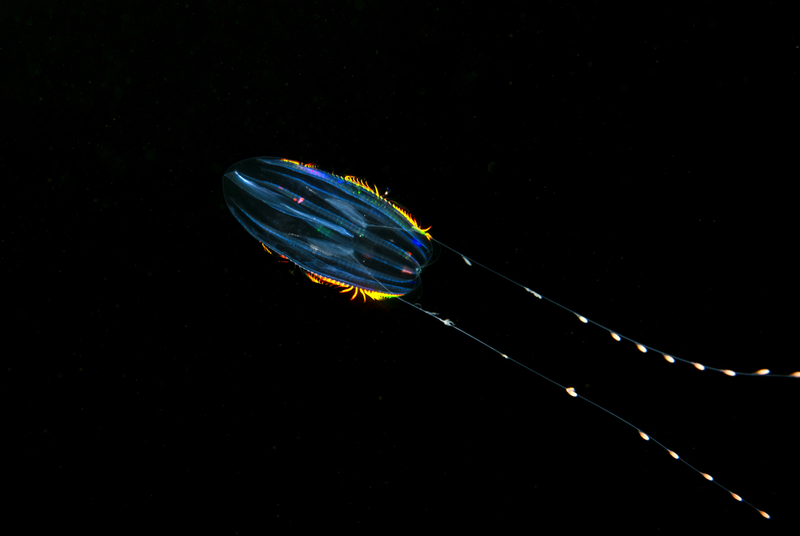
It has no brain or central nervous system, but can still use its nerve ends to find and capture prey.
Tarsier
The tarsier can mostly be found in Southeast Asia, particularly in the Philippines, Malaysia, Indonesia, and Brunei.
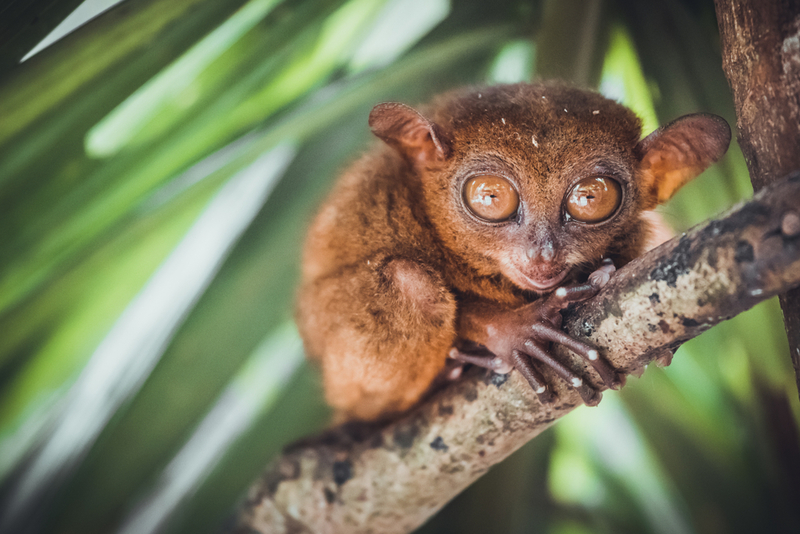
Many people compare the tarsier to Gollum from "The Lord of the Rings" series, an association with which we strongly agree with.
Casper Octopus
The ghost octopus was found near the Hawaiian Island deep in the pacific ocean, and has gripped the internet to the point of being called "Casper".

This little guy likes to lay up to 30 eggs on a bed of dead sea sponges and then proceeds to nest on these eggs for years.
Saiga Antelope
This four-legged beast hails from the foothills of the Carpathian Mountains and Mongolia.
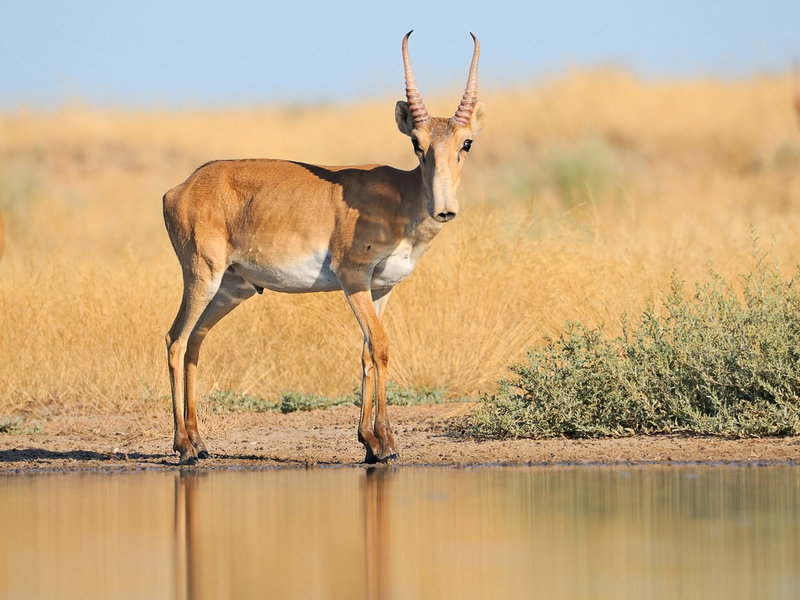
They are currently on the brink of extinction, and the odds of recovery depend on strong preservation efforts.
Achatina Fulica
Achatina Fulica, also known as the African giant snail, is often considered the largest and most invasive type of snail on earth.
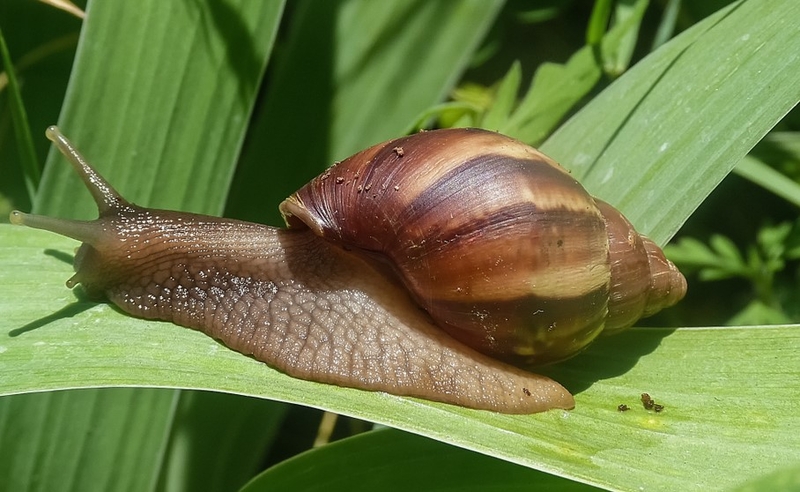
These snails are hermaphrodites, meaning that they have both male and female reproductive body parts.
Ankole-Watusi Bull
This large-horned bull is actually an American creation and is the result of breeding the cattle with the largest horns until they reached this monstrous size.

Despite being a relatively calm animal, this is one creature that you don't want to get on the bad side of.
Mata mata Turtle
The mata mata turtle is often referred to as the weirdest turtle on earth. These turtles are quite big and can reach up to two feet in length.
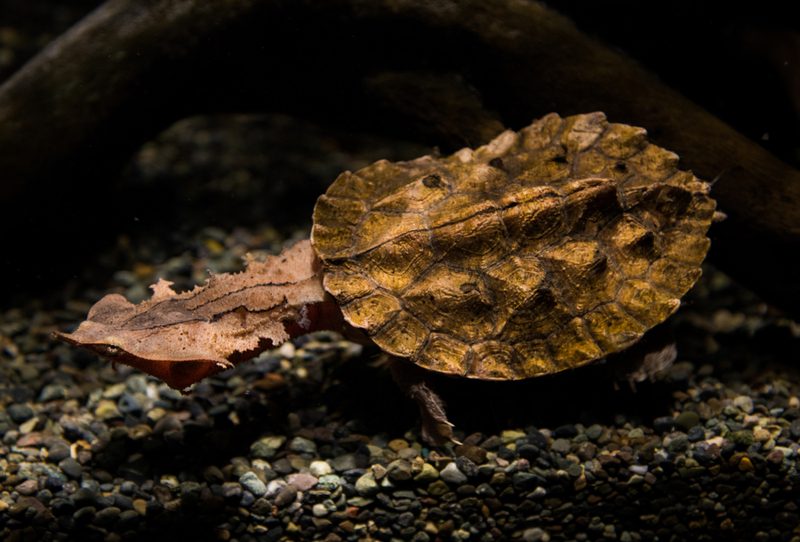
When a small sea creature gets close enough to the mata mata turtle, it simply opens its mouth, sucks it in, and bites down on it quickly, ensuring a fantastic meal.
Proboscis Monkey
Let's face it, the only reason anyone knows what a Proboscis monkey is can be easily traced to its incredibly large and funny-looking nose.

These monkeys can mostly be found in Indonesia, and belong to the subfamily Colobinae of the Old World monkeys. They are one of the largest monkey species in Asia and can weigh up to 50 pounds.
Marabou Stork
When parents tell their children how babies are delivered by storks, we have a hard time believing they have the marabou stork in mind.

These storks can be found in the areas of Africa south of the Sahara. Their name is derived from the Arabic word 'murabit', which signifies quiet and hermit-like behavior.
Silkie Chicken
Silkie chickens are like the ultimate combination of chickens and dogs. They are fluffy, furry, and friendly birds that could easily work as pets.

These beautiful birds originate from Asia, particularly China, and were referenced by the iconic Marco Polo sometime during the 13th century.
Indian Gharial
The Indian gharial is a unique crocodile that looks a lot more like a duck than an alligator. It reaches up to 20 feet in length and is mostly recognized by its unique snout.
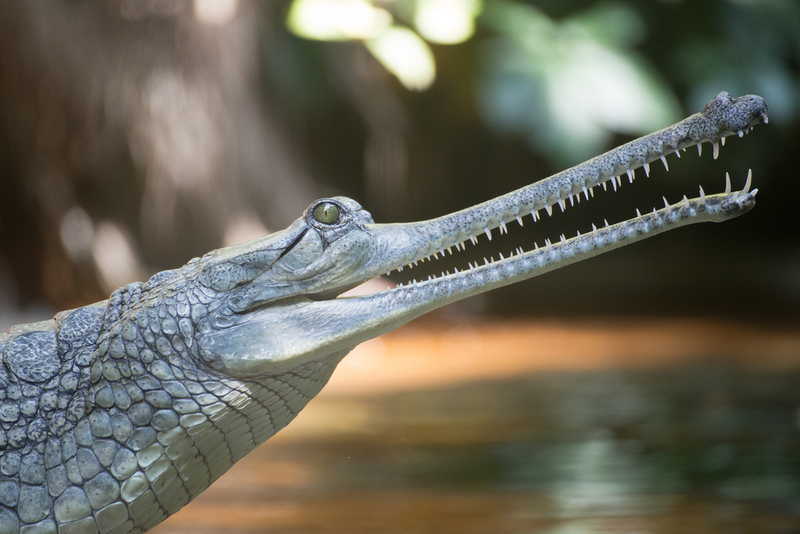
You can find these carnivores mostly around the northern Indian subcontinent. Humans are rushing to fix this before it goes fully extinct.
Spike-nosed Tree Frog
The spike-nosed tree frog, also unofficially known as the Pinocchio frog, often looks like a frog with the face of a mosquito.
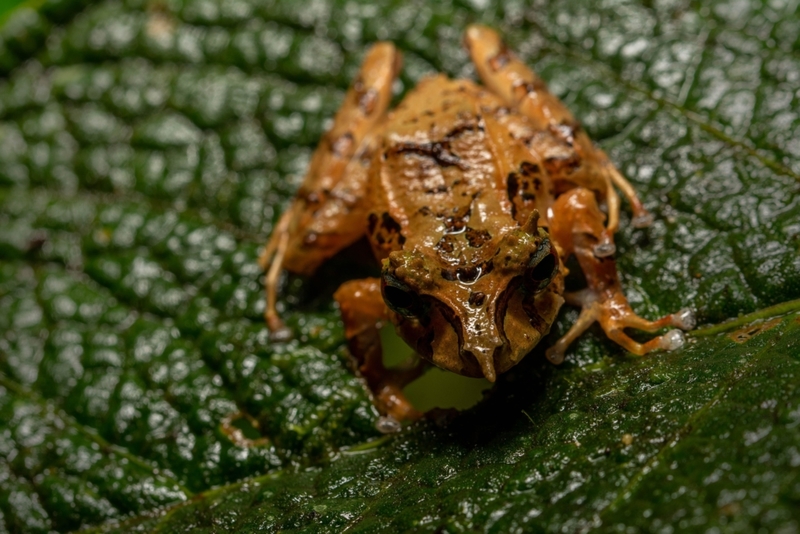
These frogs were discovered back in 2008, but there is still much we don't know about them. Their unusually long noses can inflate and deflate when calling.
Eastern Long-Necked Turtle
The eastern long-necked turtle almost looks like something straight out of a mythological story. It's able to bend its neck in various angles and is speculated as being able to bend and look 180 degrees backward.
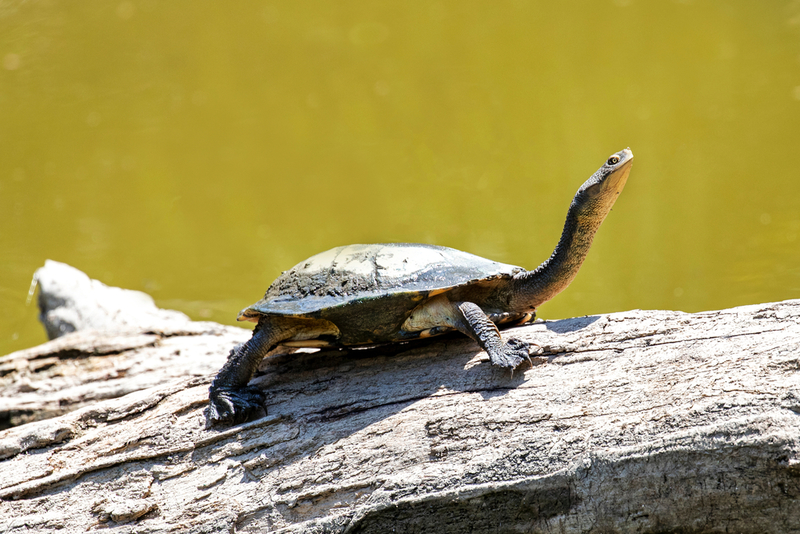
They are able to emit a foul-smelling fluid from their musk glands when threatened, which gave them the nickname of "stinkers".
Wrinkle-Faced Bat
One of the most bizarre-looking species of bats that can be found in Central America is the wrinkle-faced bat.

They secrete a weird odor from their chin to attract their female mates, which is just another quirk that makes them so unique and bizarre at the same time.
Greater Sage-Grouse
The greater sage-grouse is a unique bird found in western North America. It got its name from its large, beard-like feathers and a general appearance of wisdom.

The bird uses its two large air sacs to attract females, by inflating them and making weird popping sounds.
Pink Fairy Armadillo
The pink fairy armadillo is probably one of the cuter versions of the species, and only grows up to 5 inches long. It lives underground and uses a little biological trick to keep itself warm.

The pink fairy armadillo pumps blood into its armor, which is one of the reasons why it looks strangely skin-colored.
Stargazer Fish
The stargazer fish can be instantly recognized for having one of the most dissatisfied expressions ever seen on a living creature.

This grumpy sea creature has often been cited as "The Meanest Thing In Creation", which is evidently clear when you stare at it for even one second.
Heikegani Crab
This crab is known for its shell, which tends to resemble a human face, often being compared to that of an angry samurai. The Japanese believe that they are the reincarnated Heike warriors
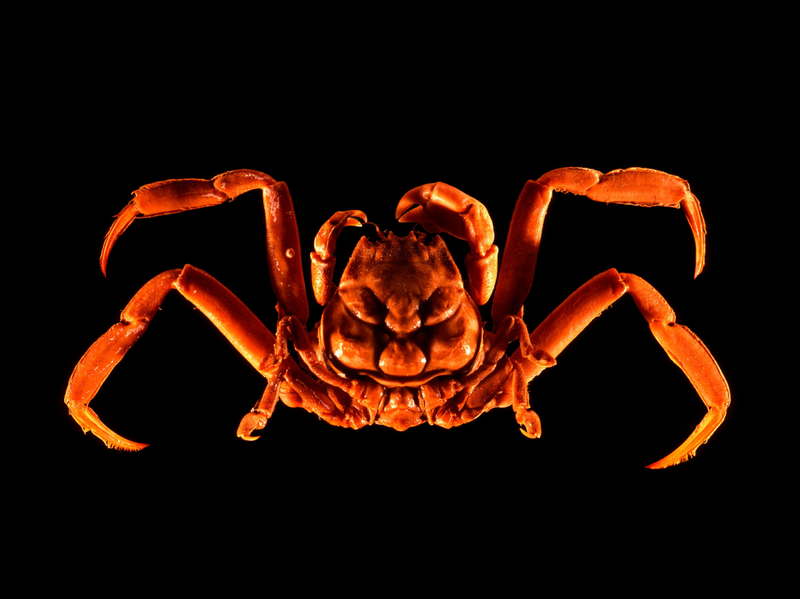
Heikegani crabs are a popular example of how people tend to find meaning and resemblances to humans when they look at various shapes in nature.
Ocean Sunfish
Few fish look as surprised as the ocean sunfish. This massive sea-dweller weighs up to 5,000 pounds and can reach a size of up to 14 feet long and 10 feet high.

Smaller fish tend to gather around them and eat parasites off their skin, which is a great win-win situation for the ocean sunfish and its guests.
Aye-aye
Despite looking like chipmunks on Ritalin, these creatures are actually quite intelligent and can use their human-like opposable thumbs to hang from tree branches.

They are the world's largest nocturnal primate and are unfortunately considered endangered at the moment.
Mexican Mole Lizard
This long, bizarre, and legless lizard has small T-Rex arms and is one of the only four amphisbaenians in the world that actually has legs.
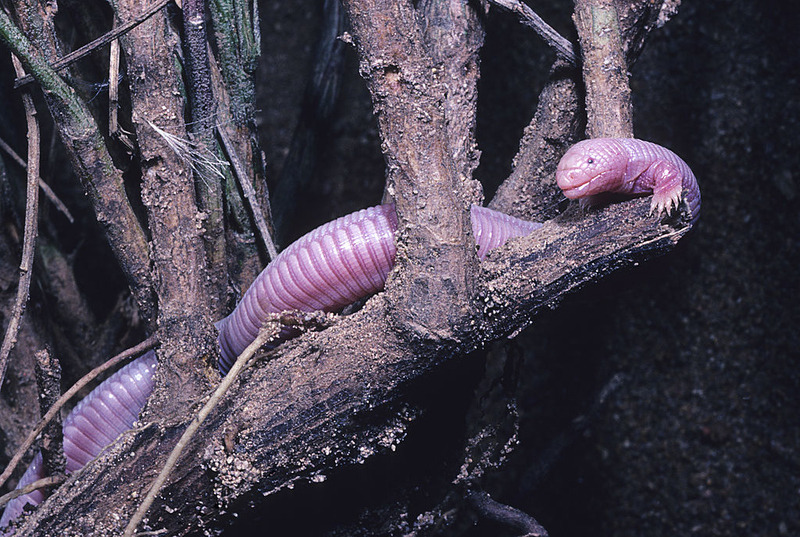
It can be found in Baja California and tends to be out in the open during midsummers. They might be a creepy sight to behold, but they aren't dangerous.
Sri Lanka Frogmouth
Te Sri Lankan frogmouth tends to resemble an owl more than a frog, but often appears to be smiling due to the curvature of its beak.
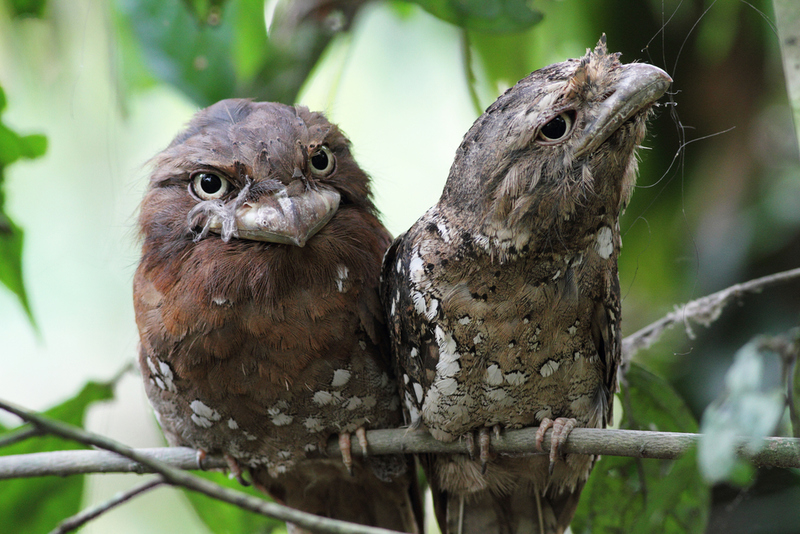
It's one of the more captivating birds to look at, and we highly recommend looking out for them if you ever find yourself in an Indian forest.
Axolotl
If you've ever wondered what this creature is, it is a salamander, otherwise known as The Mexican Walking Fish. Despite its name, it is an amphibian rather than a fish.

The Axolotl has a unique ability to regenerate limbs, which makes them primary targets for research by scientists who want to develop the same ability in humans.
Vogelkop Superb Bird-of-Paradise
The Vogelkop superb bird-of-paradise also does his best to impress the ladies, by turning into a weird alien creature with mesmerizing blue eyes.

This bird is equipped with black and blue feathers which he extends in order to create an arch shape when he wants to attract a mate.
Hoatzin
One of the weirder birds on our list and managed to accumulate a respectable list of nicknames, including the reptile bird, the skunk bird, and even the stinkbird.
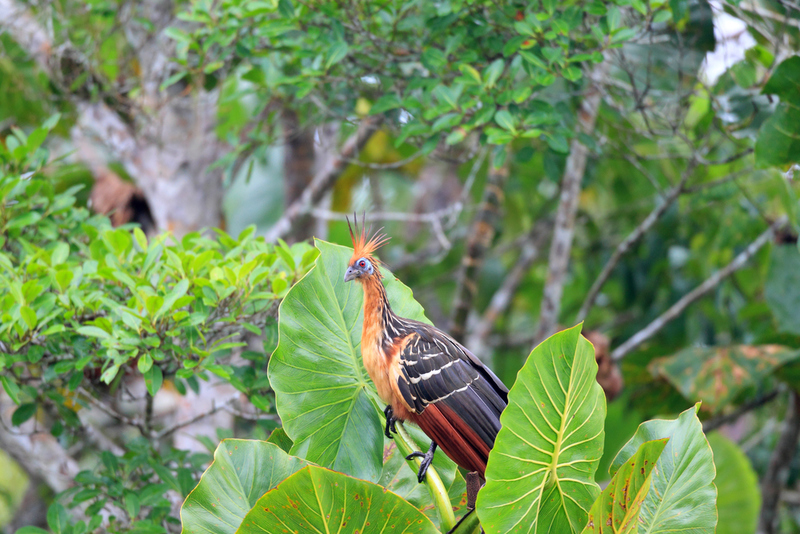
This bird reaches up to 26 inches in length and has a unique feather structure on its head that makes it look like a teenager on a first date.
African Clawed Frog
The African clawed frog is a unique species of frogs, mostly due to the three smooth, short claws it has on each hindfoot. It uses these claws to tear apart its food.

It's believed that the African clawed frogs have no tongues, no teeth, and no ears. Despite the lack of these sensory organs, they have fantastic senses.
Blue Dragon (Glaucus Atlanticus)
Glaucus Atlanticus, also known as The Blue Angel or The Blue Dragon, is a small sea slug with an incredibly exotic look.
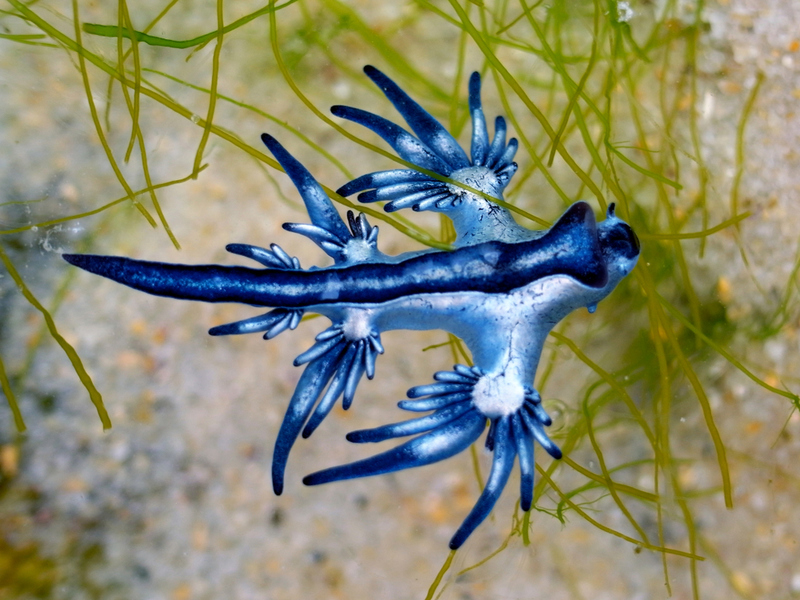
The Glaucus Atlanticus tends to feed on small open sea creatures, and hunts them using his venomous sting.
Japanese Spider Crab
For the first nightmare-fueling creature on this list, we present to you the Japanese spider crab. This massive creature's legs can reach up to 12 feet and can weigh up to 42 pounds as an adult.
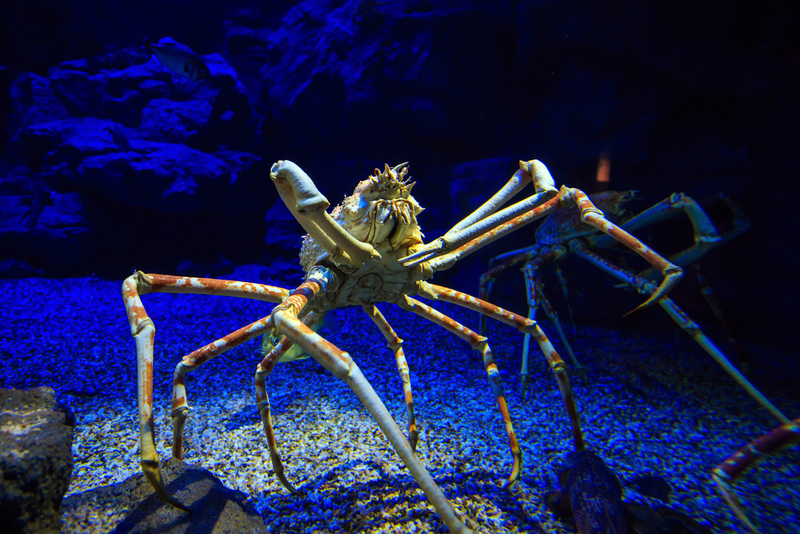
You can find them in the deep, dark depths of the ocean, usually from 500 feet below the surface.
Star-Nosed Mole
The star-nosed mole is another addition to the nightmarish animals found on this list, and might as well originate from the 1982 horror film, "The Thing."

Despite being completely blind, the star-nosed mole has very adapted sense abilities, thanks to its star-shaped nose.
Red-Lipped Batfish
This hilarious sea creature can be found mostly around the Galapagos Islands off Peru and tends to stay in depths of up to 250 feet.

It's mostly known for the obvious bright red lips on its face, and also for being a terrible swimmer.
Lowland Streaked Tenrec
Many people claim that the lowland streaked tenrec is the horrible result of what Pikachu from Pokemon would look like in real life.

This unique rodent can be found in Madagascar and is mostly known for having long and sharp hair-like bristles that resemble that of a hedgehog.
Helmeted Hornbill
Don't worry, this bird didn't get a big boom-boom on his head, it's actually just one of its unique features.
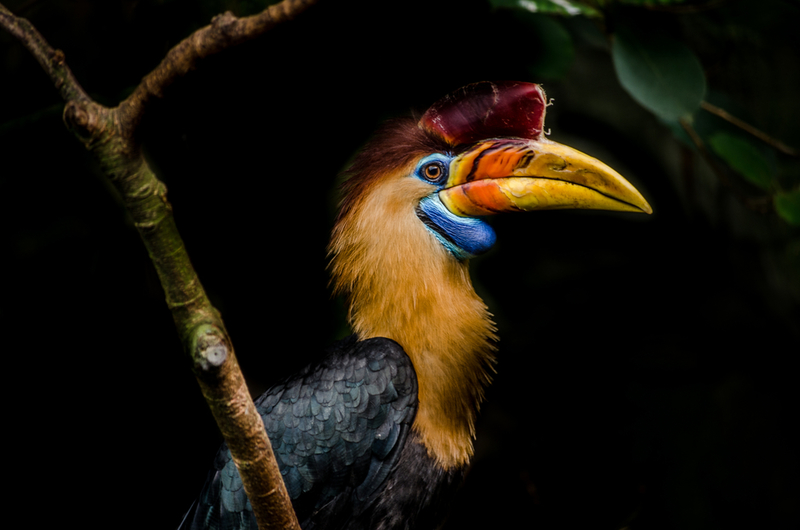
Unfortunately, the Helmeted Hornbill's special casque also makes it a target for hunters and poachers, who managed to turn it into a critically endangered species.
Bigfin Squid
This creature is genuinely one of the most terrifying things that lurk in the ocean and resembles something straight out of an H. P. Lovecraft novel.
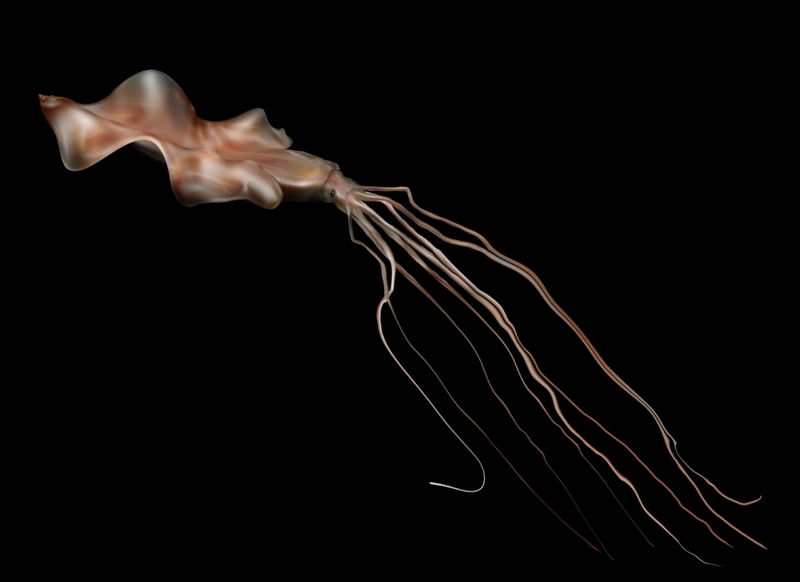
Due to its rarity, it's not yet known if the bigfin squid is just a mutated creature or a full-blown category of species.
Guianan Cock-of-the-rock
If you manage to get past its incredibly confusing look, you'll find that the Guianan cock-of-the-rock is one of the most pristine and beautiful birds to be found in nature.

The male Guianan cock-of-the-rock uses its incredible colors and crest to attract female birds and tends to breed early in the year.
Purple Frog
The purple frog, also known as the pig-nosed frog, is definitely one of the weirder frog species out there. It lives mostly in the Western Ghats in India.

Unlike most frogs, their massive bodies prevent them from jumping or moving around quickly.
Hammer-Headed Bat
The hammer-headed bat is both weirder and more normal than it looks in the picture below. It's basically a bat with the head of a moose.
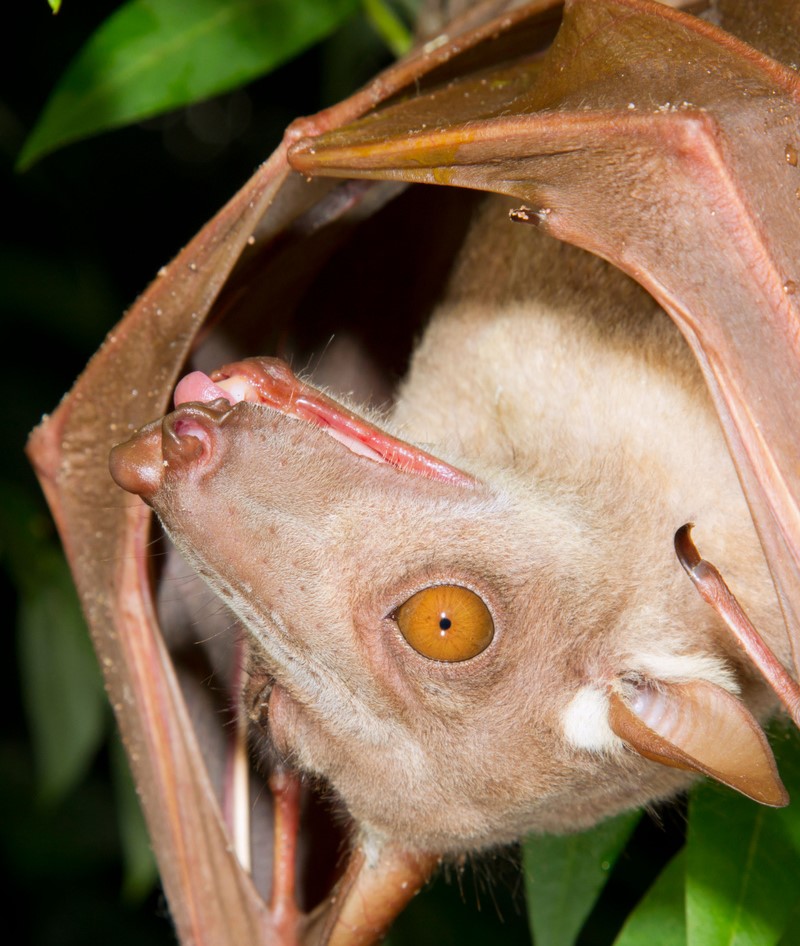
Believe it or not, but the purpose of the hammer-headed bat's large jaw is actually to attract females. It uses its enormous head to produce loud mating calls.
Portuguese Man O' War
The Portuguese man o' war is one of the weirdest marine creatures to have ever been discovered. It has long, venomous tentacles that are capable of killing not just large fish, but also humans.

If you're ever swimming around the shores of Florida, make sure to watch out for any sea life resembling the alien from the movie "Life".
Remora
The remora fish can be most easily recognized by its head, which looks like a tractor went over it and left a flat tread.

The remora's ability to piggyback and ride on fellow sea dwellers is what gave it the nickname "The Suckerfish".
Hairy Frog
These incredibly bizarre frogs mostly come from Central Africa and are also known as Horror frogs and Wolverine frogs.

If that's not weird enough, Wolverine frogs also have sharp claws in their back feet, which they create by breaking their bones.
Amazon Giant Fishing Spider
This harsh and moist environment has led to some extreme mutations, but almost none of them compare to the giant fishing spider.

The Amazon giant fishing spider loves to camp on the water's surface before taking a swing through the underwater sea life and having his dinner.
Venezuelan Poodle Moth
This fluffy little insect was discovered in Venezuela only as recently in 2009, this new species has still not been properly studied, so there is not much we know about them. They tend to grow to about 1 inch or around 2,5 cm in size.

This alien-looking moth has big bulging eyes, spiky antennas, and poofy-like fur covering its head, thorax, abdomen, and even wings.
Dumbo Octopus
Their name comes from Disney's "Dumbo" because of the creature's ears bearing similarities to the movies' title character.
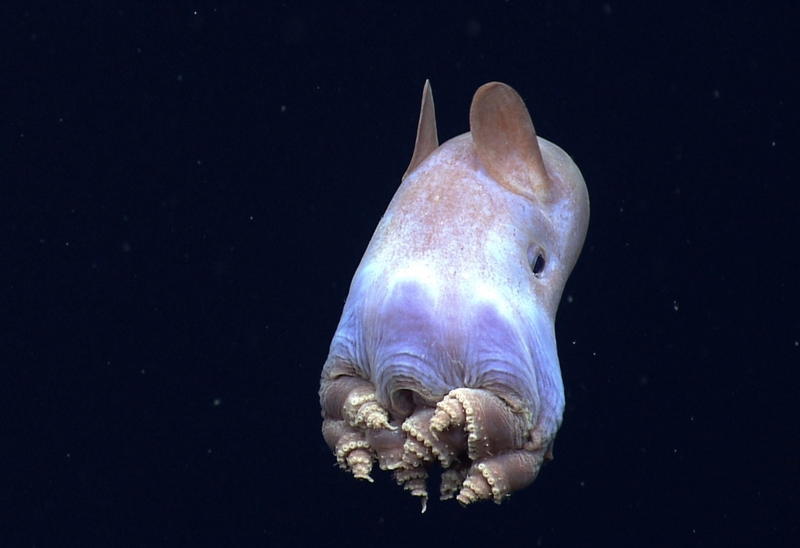
These creatures swim by flapping their "ears" or propelling water through their funnel, somewhat like a squid.
Macropinna Microstoma
This species of fish lives at a depth of about 600 meters to 800 meters, and can often be found hanging almost motionless in the water.
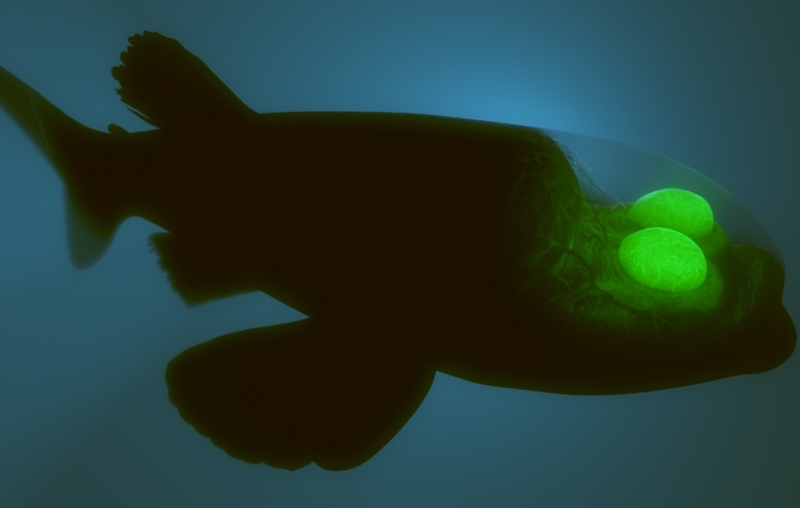
It is quite unique with a transparent, fluid-filled cover on its head, through which the lenses of its eyes can be seen.
Irrawaddy Dolphin
Irrawaddy Dolphin is an aquatic dolphin found in the Bay of Bengal and Southeast Asia. They are mostly found in the 118-mile stretch of the river between Cambodia and Laos.
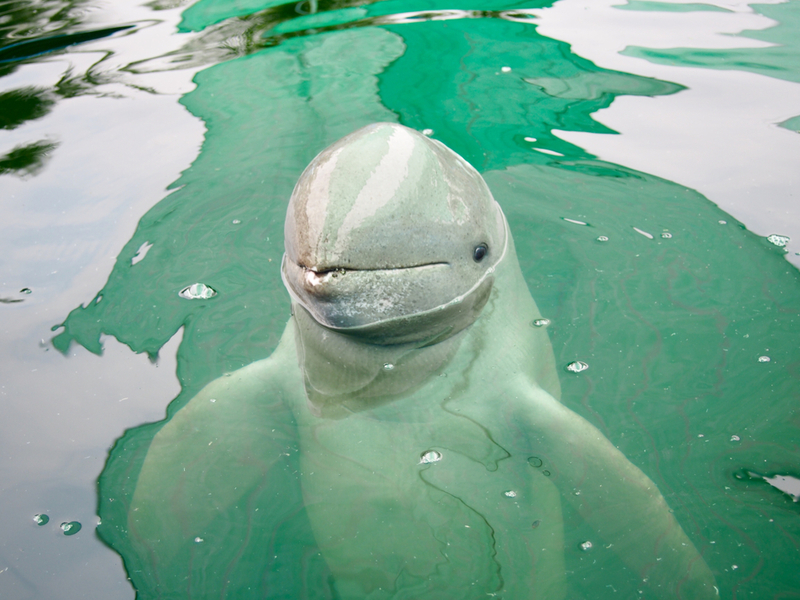
They feed principally on fish, which they find with sonar since they are nearly blind. Their most notable feature is a round head with no distinct beak.
Sunda Colugo
This adorable lemur is a Sunda Colugo or Sunda flying lemur is a species of colugo, native to Indonesia, Thailand, Malaysia, and Singapore.
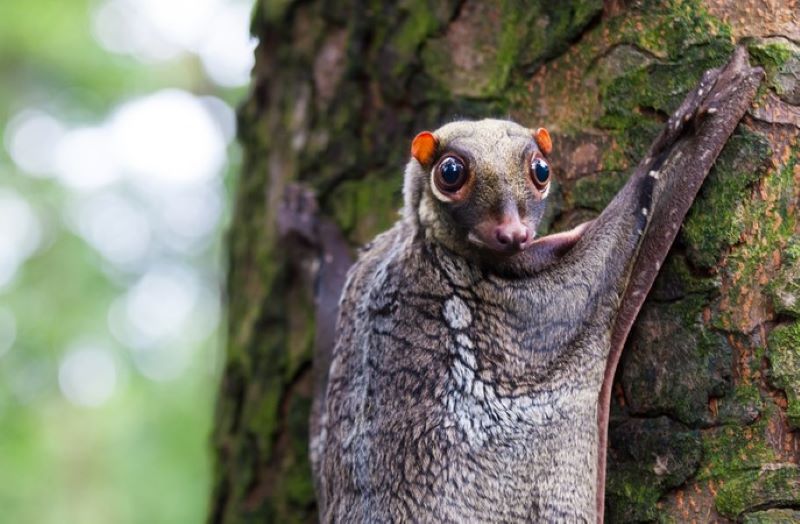
They actually don't fly but glide instead. Sunda Colugos are active at night and they feed on soft plant parts like young leaves, shoots, flowers, and fruits.
Blue Parrotfish
This glowing-blue fish can be found in shallow waters of the tropical and subtropical parts of the Caribbean Sea and the Atlantic Ocean.

These Parrotfish are anemonefish: they can live for a while as male or female – but sometimes hormones kick in and cause it to change gender, now isn't that neat?
Glass Frog
This fascinating frog can be found in Southern America and is a family of amphibians that exhibit an unusual peculiarity — transparent abdomens.

Glass frogs have incredible appetites, as such, they have a need to eat and are constantly in search of small insects.
Fossa
This is quite an interesting cat-like creature, or is it more like a squirrel? The fossa resides in Madagascar. Their classification has been controversial because physically it resembles a cat.
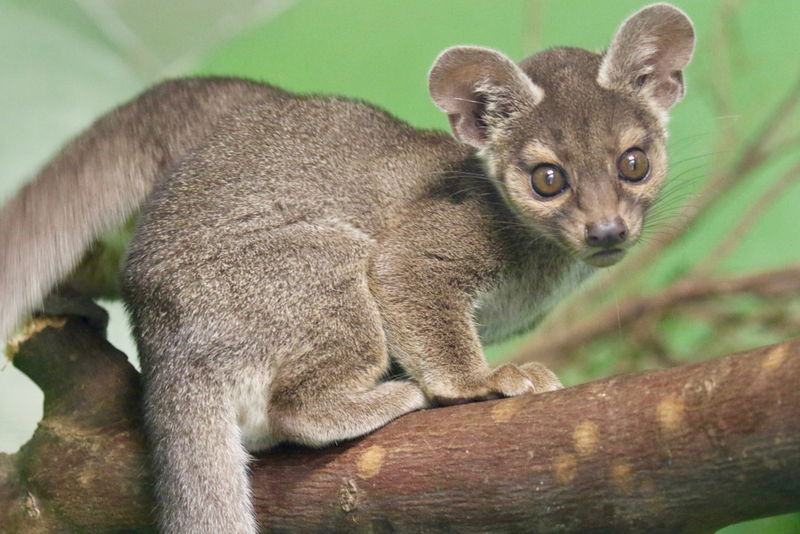
What is even more interesting, is that genetic study has shown that they are actually their own separate species.
Panda Ant
This looks like an ant designed by Tim Burton! But despite looking like an ant and being referred to as such, it is in fact a form of wingless wasp.
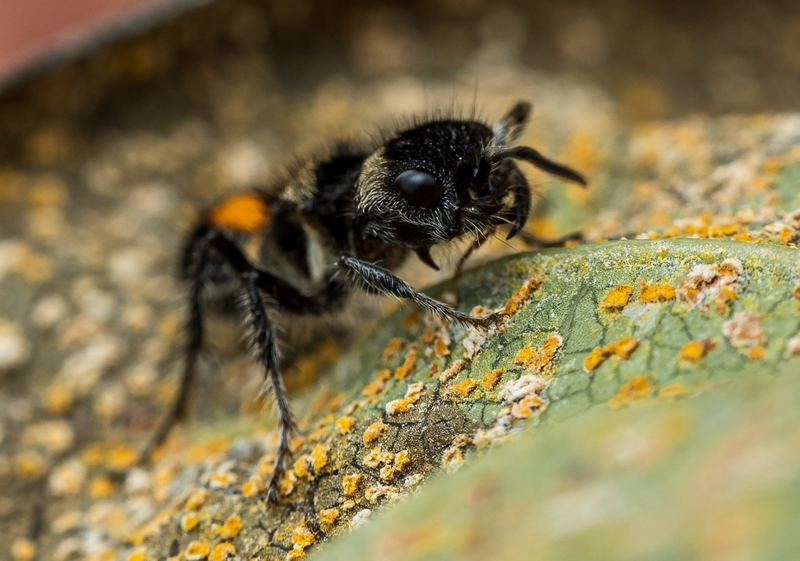
These fierce little creatures have earned a reputation as “cow killers” and they should not be underestimated.
Tufted Deer
These little deers are found in central China, the tufted deer is a small species of deer characterized by a raised tuft of black hair on its forehead, and like most kinds of deer, fang-like canines for the males.
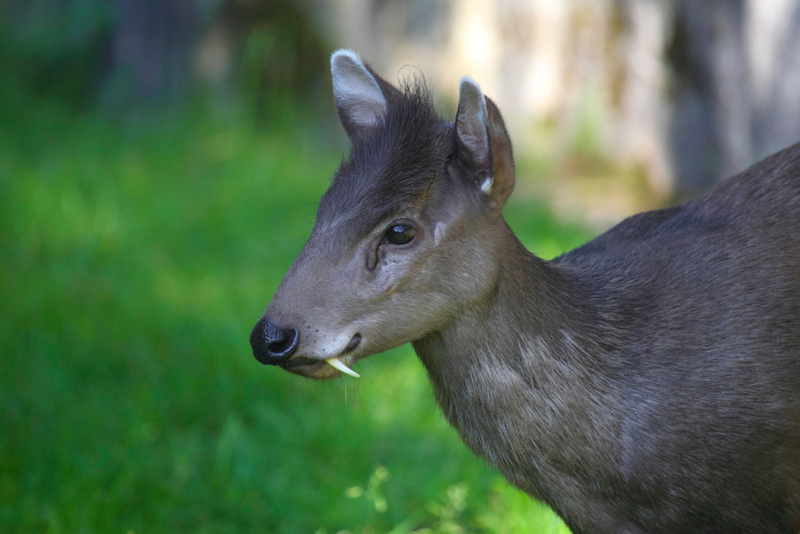
It is a timid, mainly solitary creature, and they sometimes live in pairs and enjoy living in areas with sheltered forests where they can find good cover.
Honduran White Bat
The Honduran white bat has characteristic white fur, with tips of their individual hairs being gray as well as a peculiar leaf-shaped nose.

They dwell in leaf 'tents' that they create by cutting the side veins extending out from the midrib of large leaves.
Spiny Bush Viper
Atheris hispida is a venomous viper from Congo, Uganda, and Kenya. Spiny bush vipers favor rainforests that offer plenty of flowering shrubs and bushes.

Spiny bush viper has strong venom which causes severe bleeding from internal organs. The amount and strength of the venom depend on each individual snake.
Leafy Seadragon
This charismatic species can be found along the southern and western coasts of Australia, this leafy seadragon has long leaflet protrusions coming from all over their body.

They don't have a specialized pouch characteristic of male seahorses. Instead, they carry their eggs under the tail.
Dik-Dik
Meet the miniature antelope that's so adorable, they named it twice! They are found in the bushlands of southern and eastern Africa.

Their name comes from the unique alarm call that the females commonly make, which sounds like a wheezing and whistling “dik-dik.”
Lilac-Breasted Roller
This colorful bird is widely spread within sub-Saharan Africa and the southern Arabian Peninsula. They prefer more open areas, and for the most part, they stay away from treeless places.
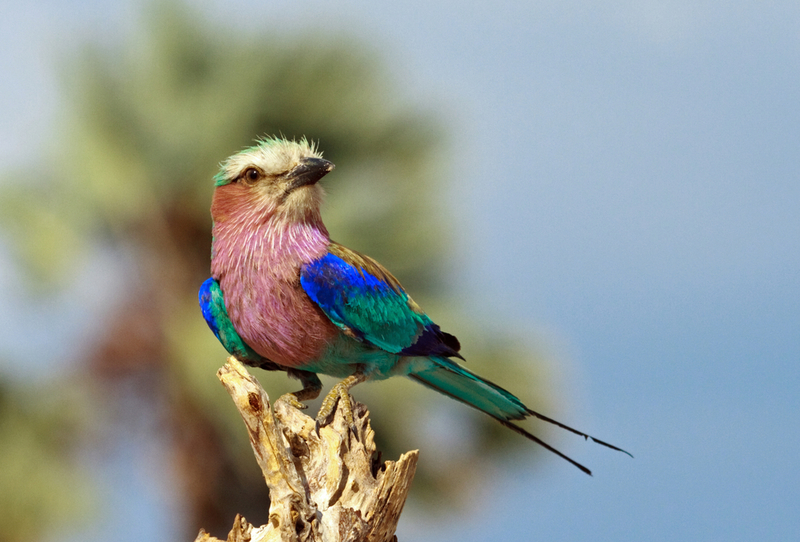
Their bright feathers are conspicuous with deep lilac breast feathers.
Satanic Leaf-Tailed Gecko
The Satanic leaf-tailed gecko is a type of gecko that is found on the island of Madagascar. This little gecko got his name from the Belgian biologist George Boulenger back in 1888.
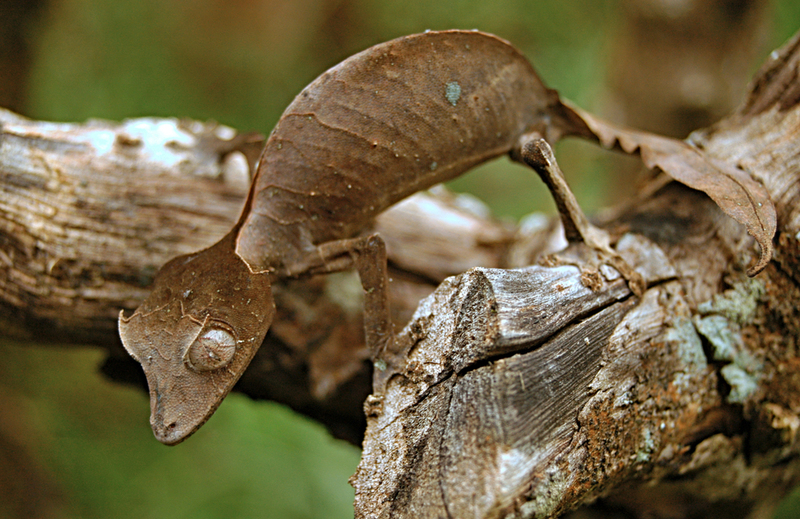
Their flattened tail appears to look like a leaf, helping the animal blend in within the environment.
Okapi
This incredibly rare mammal is native to Central Africa, mainly residing in the Democratic Republic of the Congo. Despite their zebra-like stripes, they are actually more closely related to giraffes.
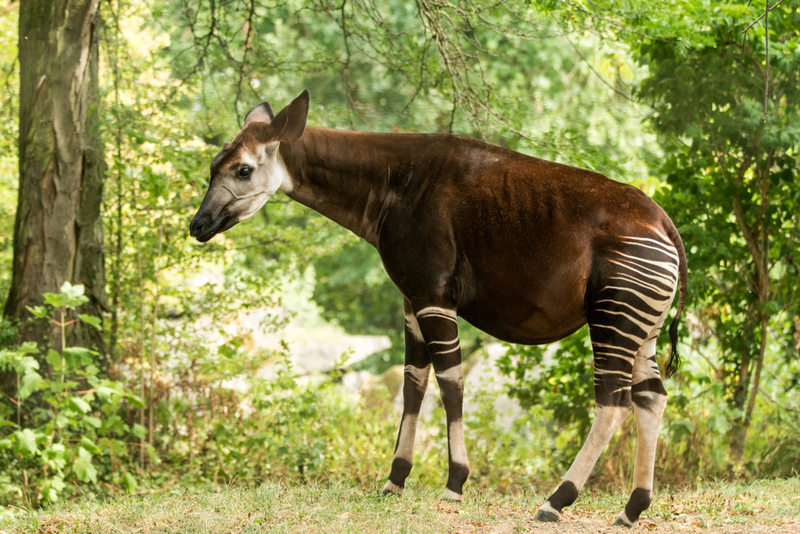
The Okapi's chocolate coat is a reddish-brown shade, much in contrast with the white horizontal stripes and rings on the legs and white ankles.
Blobfish
The blobfish inhabits the deep waters off the coasts of Oceania. It is primarily a gelatinous mass with a density slightly less than water, which allows it to float above the seafloor without using much energy on swimming.

They only appear so droopy once they are taken out of the sea when pressure changes drastically.
Golden Tortoise Beetle
This lovely little fellow is native to the Americas. This species of beetle ranges in color from reddish-brown with little black spots to gold, and sometimes even metallic, earning them the nickname "gold bug".

They tend to change color in different conditions, such as during times of disturbance, like when it is touched by a researcher.
Australian Peacock Spider
Australia has lots and lots of weird animals. Many of them are dangerous, too, though this colorful guy here doesn't seem to be very dangerous, since it's only five millimeters across. They're also just so fabulous.

The males of these colorful spiders not only have a big, beautiful body to attract the ladies but they also coyly lift a leg off the ground to signal to the gals that they're ready to woo.
Maned Wolf
It resembles a fox, it has 'wolf' in its name, but this canine creature is actually neither. It is, so far, the only species in the “Chrysocyon” genus.
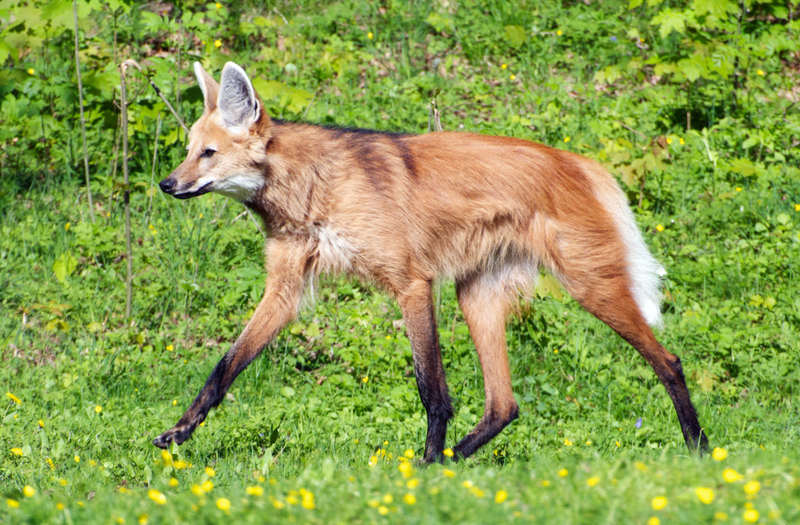
The name means “Golden Dog.” It's the largest canine in South America, standing thirty-five inches at the withers (which is the shoulder blades of an animal that walks on four legs).
Patagonian Mara
Also known as the Patagonian cavy, Patagonian hare, or dillaby, the Patagonian mara is a herbivorous rodent from the mara species, which also includes capybaras, beavers, and porcupines.

Only found in Argentina, these rodents resemble the American folklore of the jackrabbit, a spry creature with distinct long limbs and ears.
Naked Mole-Rat
If you're a fan of the classic Disney cartoon “Kim Possible,” then you're already plenty familiar with this one. For the rest of you: Introducing the naked mole-rat, which manages to be both cute and incredibly disturbing.
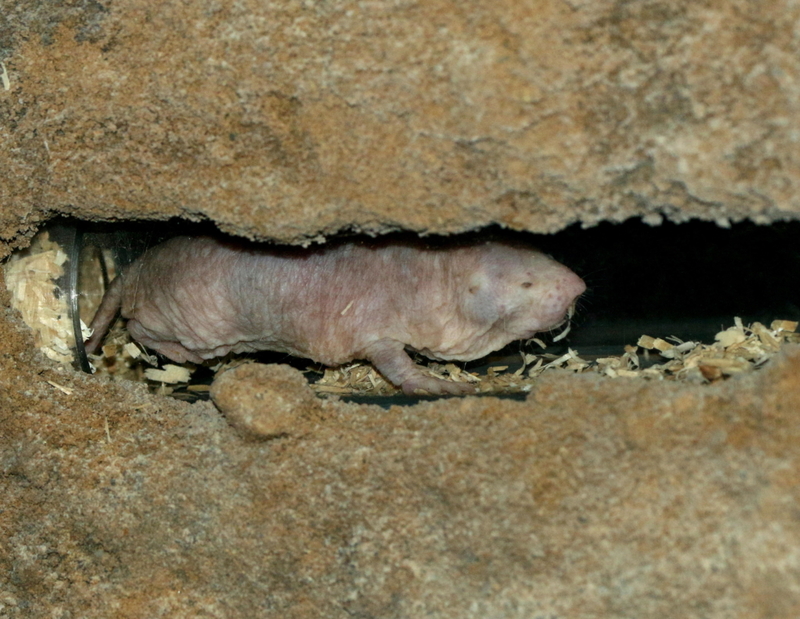
Its unusual physical traits (hairless, pain insensitivity, and strange method of regulating heat) make it singularly suited for the harsh East African environment.
The Gerenuk
This lean beast is called a Gerenuk, and it hails from the Horn of Africa, in the east. Also known as the giraffe gazelle, this mostly-proportional animal got its first description from naturalist Victor Brooke in 1879.
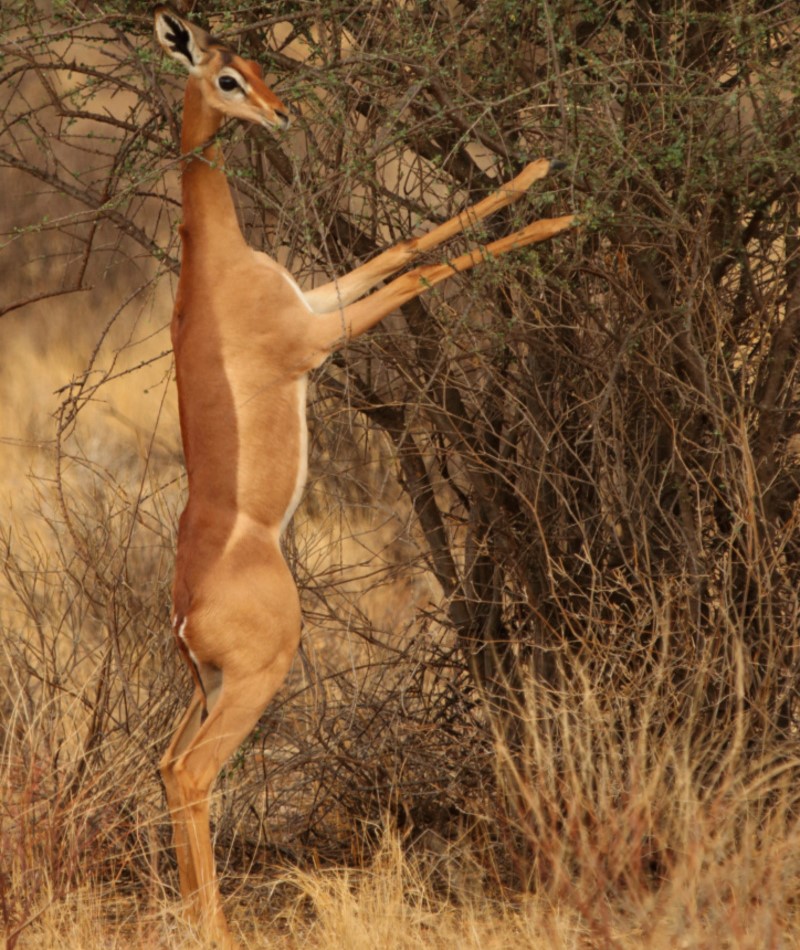
The species is sexually dimorphic, meaning the males and females look different, like peacocks and peahens.
Dugong
This marine mammal is where the designers of Pokemon got the inspiration for the first-gen creature Dewgong.
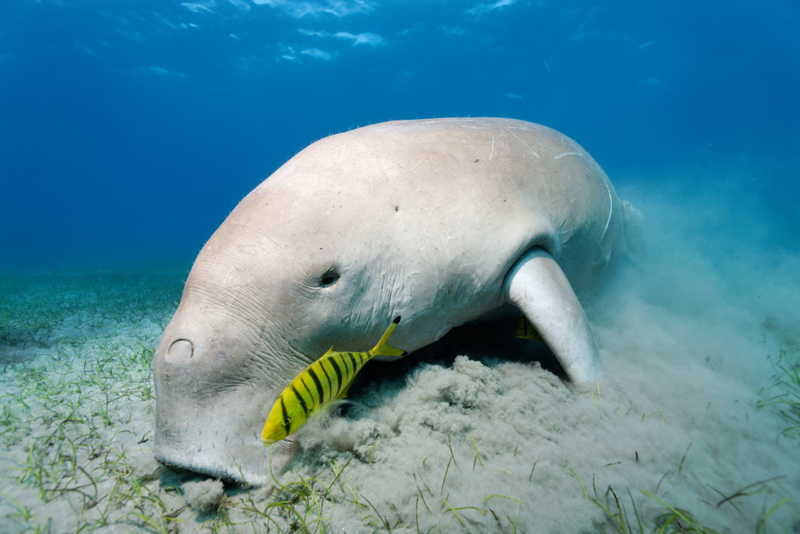
The snout turns down sharply, which helps it feed on its favorite benthic seagrass. Unlike manatees, their molar teeth are simple and peg-like.
Babirusa
Babirusa, also known as deer pigs, hail from the Indonesian islands of Sulawesi, Togian, Sula, and Buru. The most noticeable feature of this group of swine is their long, curved tusks.
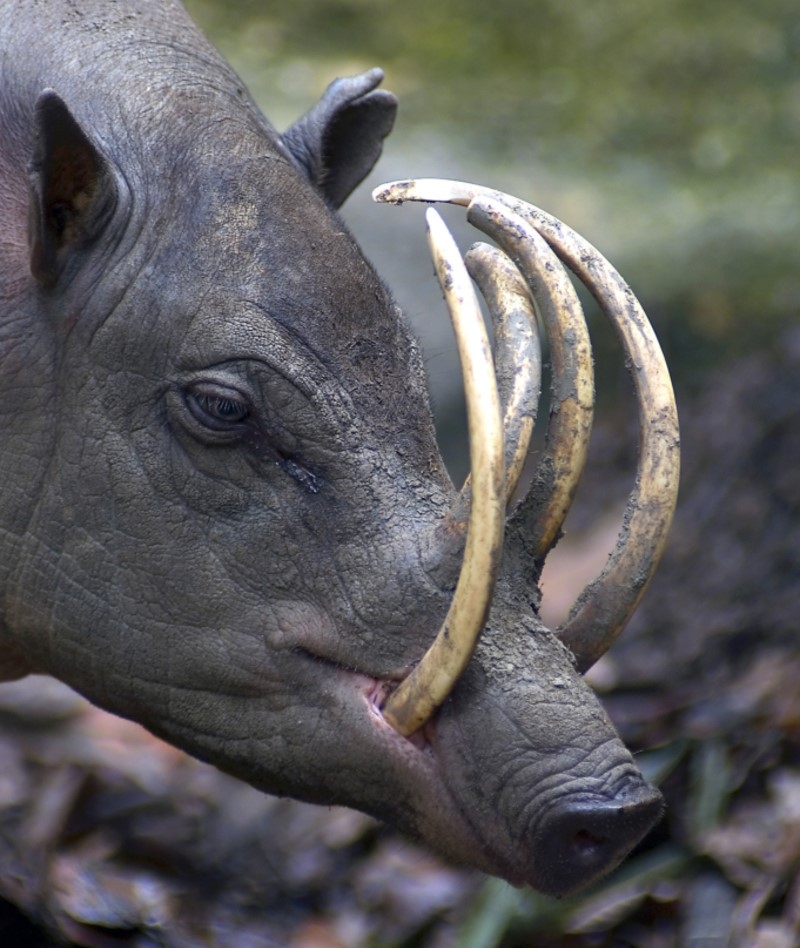
Not only do they develop from the sides of the mouth, like normal teeth, but the tusks from the upper mandible actually pierce the flesh, making them look like horns.
Lamprey
Lampreys are horrible, horrible monsters that aren't direct from your nightmares, but they'll be there soon.
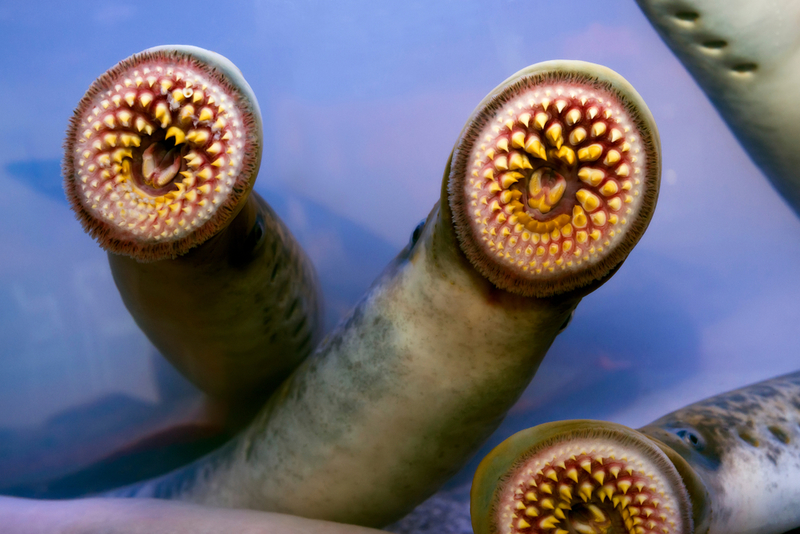
They are an ancient lineage of jawless fish of the order “Petromyzontiformes.” The name lamprey comes from the Latin word lampetra, meaning more-or-less “stone licker.”
Zebra Duiker
This little guy, found primarily in Liberia (along with the Ivory Coast, Sierra Leone, and occasionally Guinea), is a small antelope.
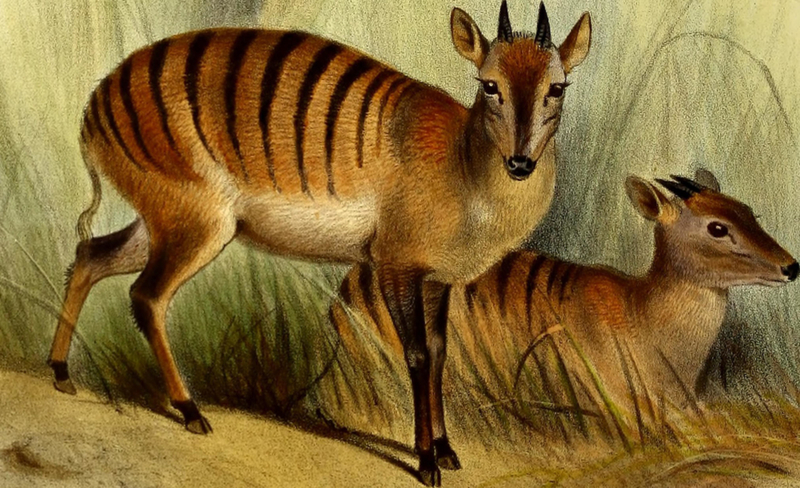
These duikers are quite small compared to other members of the antelope family, usually only growing to about three feet in length, weighing less than fifty pounds.
Yeti Crab
Also known as yeti lobsters, yeti crabs are named after the legendary Yeti, a mythical creature thought to exist in the Himalayas. They exist in their own family, Kiwaidae, in the superfamily Chirostyloidea.

While it looks like they exist in cold climates, they're normally found around deep-sea hydrothermal vents and cold seeps — ocean floor areas where hydrogen sulfide, methane, and other fluids collect into pools.
Cantor's Giant Soft Shelled Turtle
Ask any third-grader the first thing that comes to their mind about turtles, and you're going to hear their big shells.
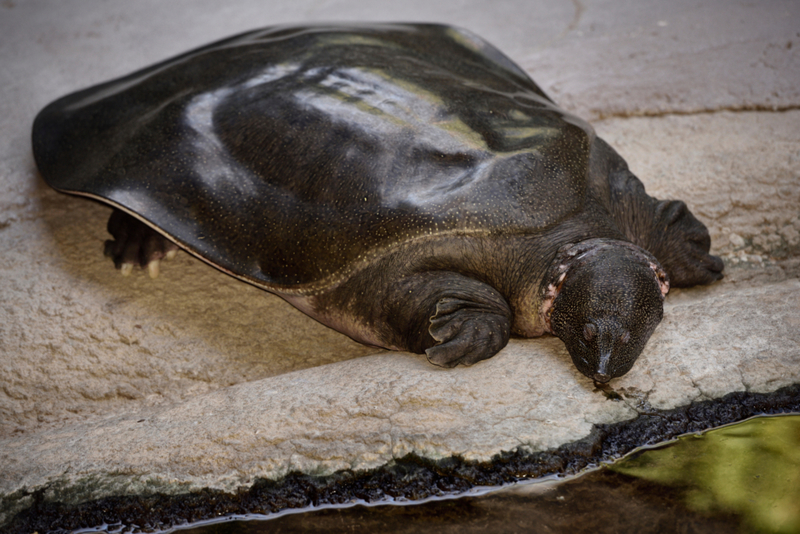
This turtle spends ninety-five percent of its life buried and motionless. Same, my dude.
Gobi Jerboa
The Gobi Jerboa, as the name suggests, comes to us from the Gobi desert in China and Mongolia. This species was only discovered a hundred years ago by Glover Morrill Allen.
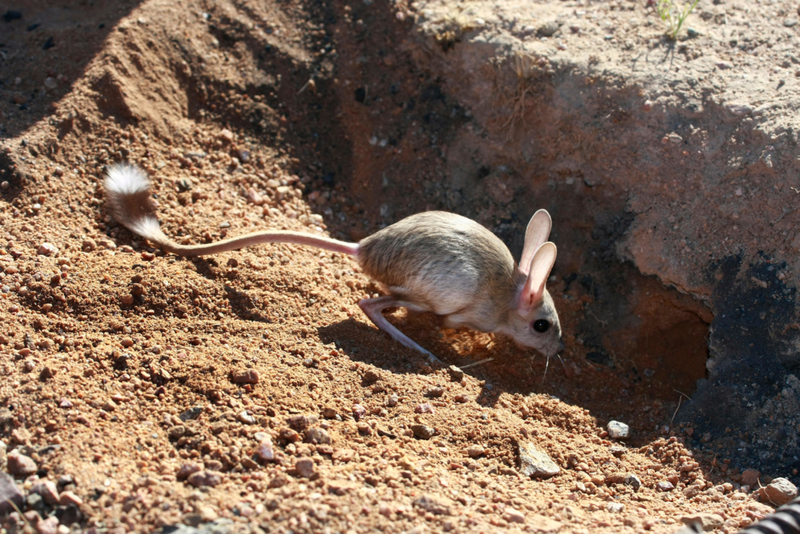
With long ears and spindly, jumping legs, the movement of this creature is quick and light. The tail (usually much longer than the body of the animal) often drags on the ground.
Goblin Shark
Sometimes called a “living fossil,” the goblin shark is the only extant representative of the family Mitsukurinidae, which goes back some 125 million years.
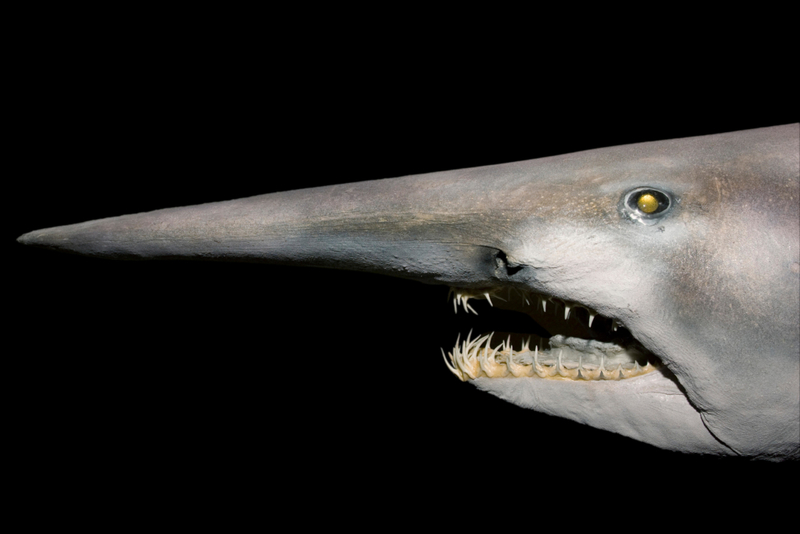
While the goblin shark poses no danger to humans, going swimming at night and having this thing brush past you is going to warm up the water around you pretty quickly.
Umbonia Spinosa
It's a little hard to tell what this animal actually is, but look close enough and you'll see a bug down there. These creatures are also called thorn bugs and are closely related to cicadas.
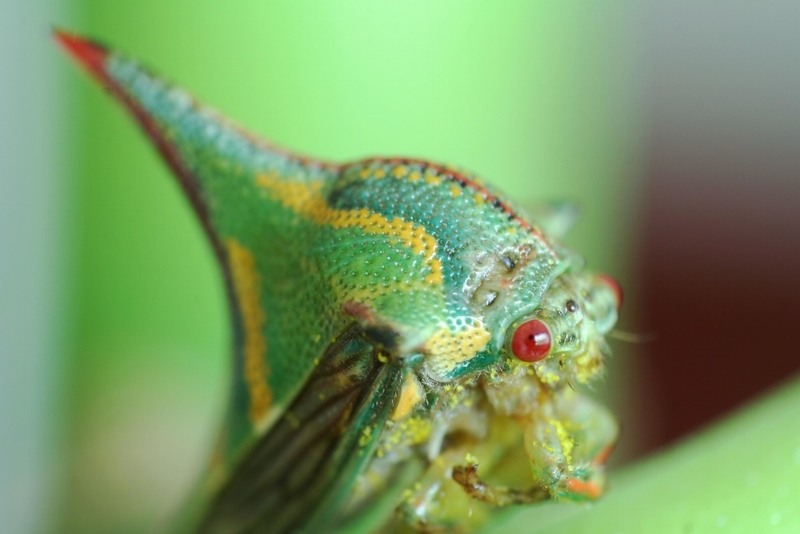
The indigenous people of South America consider the juvenile form of this bug edible since their spines are still soft after molting.
Hummingbird Hawk-Moth
What happens when you jam three flying animals together into one body? You get the hummingbird hawk-moth. We're unsure why they decided to add “hawk” to the name. Those scientists are a kooky bunch.
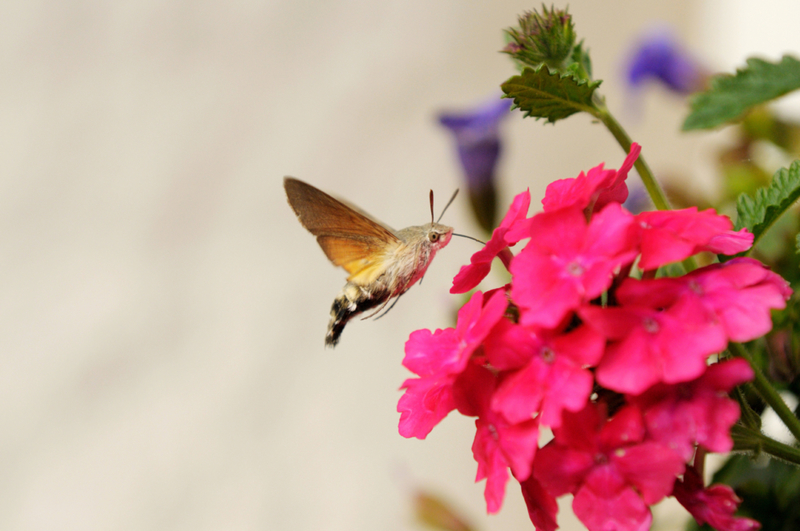
The hummingbird hawk-moth can be found in a great swathe of the northern hemisphere aside from the Americas, from Portugal to Japan.
Mantis Shrimp
The mantis shrimp is one of the most unique creatures you're going to see on this list. They're known as sea locusts, prawn killers, and “thumb splitters.” But why, you might ask.
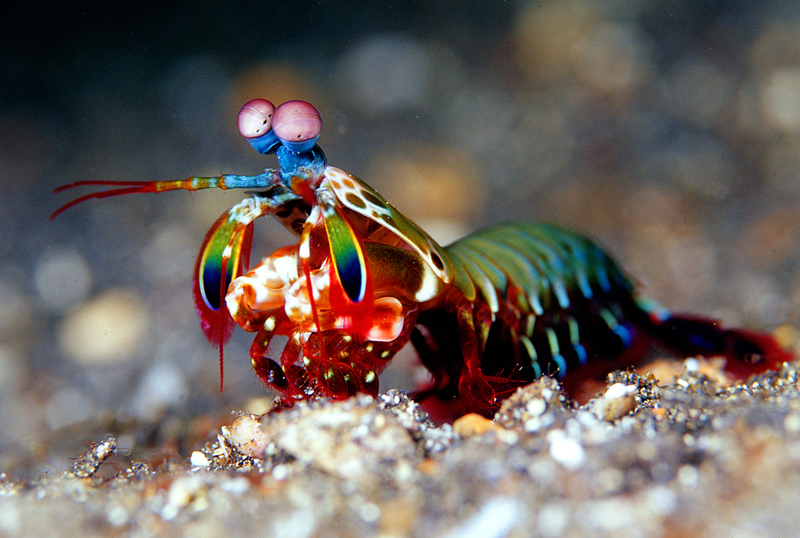
Here's one of the most interesting animal facts you could learn: the mantis shrimp is a predator in tropical and subtropical waters, hunting with only its fists.
Pacu Fish
In most ways, the pacu fish is just like most other fishes. In most ways. As you can see from the picture, the pacu fish has a healthy set of chompers that look uncannily like human teeth.
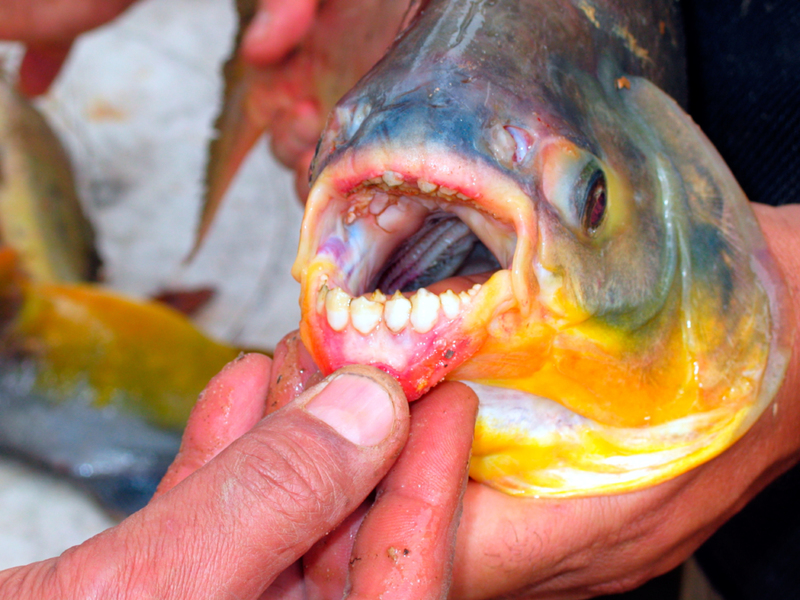
While the piranha has pointed, razor-sharp teeth, the pacu feed mainly on plant material, meaning their teeth are made more for grinding and chewing, not tearing.
Giant Isopod
Isopods, for the most part, don't grow to be so large. Something that, as you look at the picture, you're probably happy to hear. Giant isopods are one of the almost twenty species of large isopods in the genus Bathynomus.
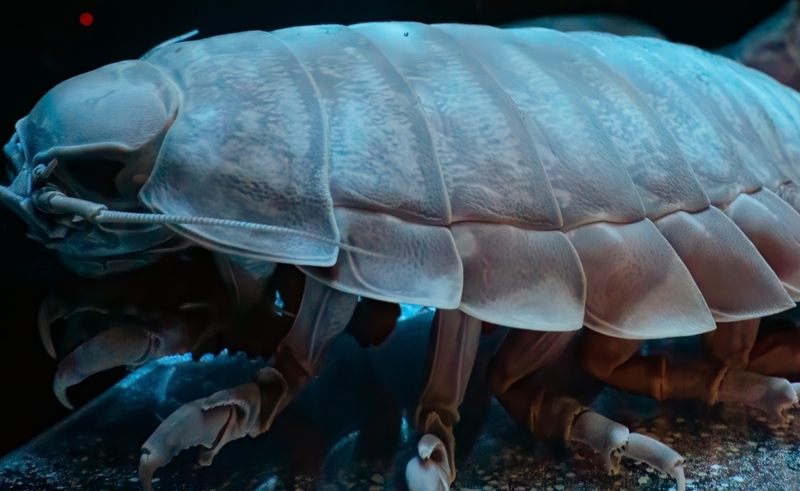
Found mostly in the cold, deep waters of the Atlantic, Pacific, and Indian Oceans, their large size is due to something called deep-sea gigantism.
Raccoon Dog
Don't let this cute exterior fool you. While both dogs and raccoons are pretty used to living around humans, this creature is 100% a wild animal.
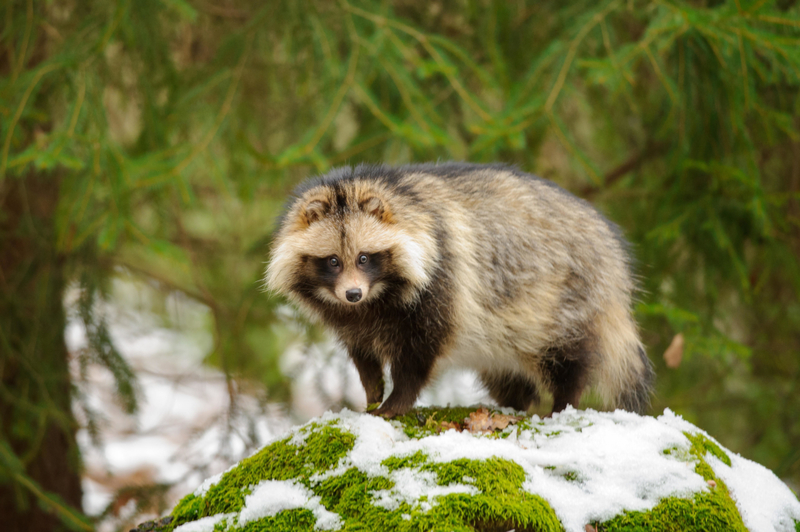
These raccoon-looking wild dogs aren't usually seen outside of their lairs during the daytime. Nocturnal by nature, they prefer to wander around and hunt after the sun goes down.
Shoebill
This large stork-like bird gets its name from the shape of its beak. It sort of looks like a shoe. While it was known to ancient communities in Egypt and Arabia, the bird wasn't actually classified until the nineteenth century, by John Gould.

The bird's best-known feature is its distinctive bill, which they use to catch and hold on to large, slippery fish that they enjoy eating.